

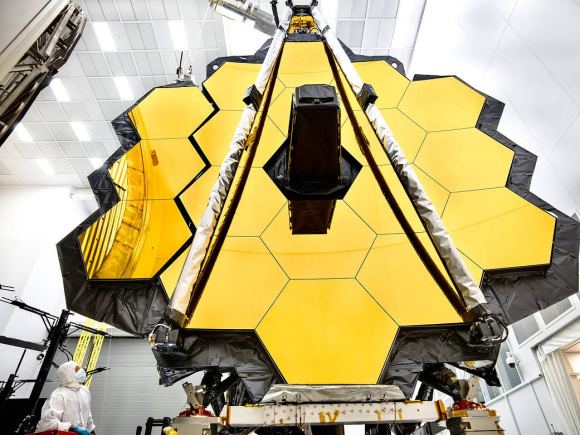
The James Webb Space Telescope inside a cleanroom at NASA’s Johnson Space Center in Houston. Launch the darn thing already! Credit: NASA/JSC
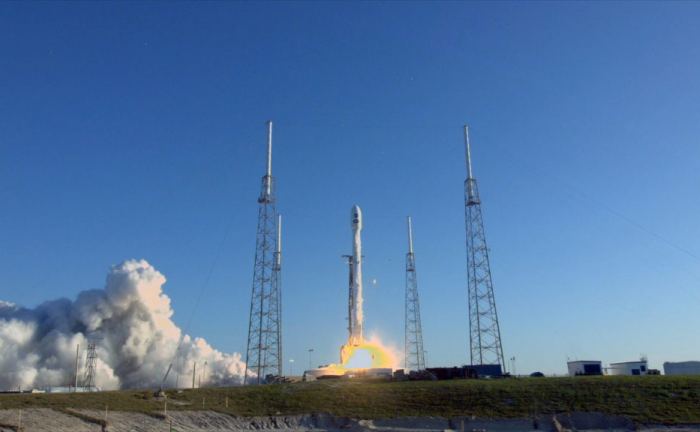
Liftoff of the SpaceX Falcon 9 rocket carrying NASA’s TESS spacecraft. Image credit: NASA TV
Click here to return to top of page
The Transiting Exoplanet Survey Satellite (TESS) is an astrophysics Explorer-class mission between NASA and MIT. After launching in 2017, TESS will use four cameras to scan the entire sky, searching for planets outside our Solar System, known as exoplanets. The mission will monitor over 500,000 of the brightest stars in the sky, searching for dips in their brightness that would indicate a planet transiting across. TESS is predicted to find over 3,000 exoplanet candidates, ranging from gas giants to small rocky planets. About 500 of these planets are expected to be similar to Earth's size. The stars TESS monitors will be 30-100 times brighter than those observed by Kepler, making follow-up observations much easier. Using TESS data, missions like the James Webb Space Telescope can determine specific characteristics of these planets, including whether they could support life. This video is public domain and can be downloaded at: To learn more about TESS: Like our videos? Subscribe to NASA's Goddard Shorts HD podcast: Or find NASA Goddard Space Flight Center on Facebook: Or find us on Twitter: Voice-over by Peter Cullen, the voice of Optimus Prime of the Transformers
TESS, the Transiting Exoplanet Survey Satellite, is NASA's newest exoplanet mission. Led by MIT, TESS will find thousands of new planets orbiting nearby stars. During its two year survey, TESS will watch a wide variety of stars, looking for signs of planets ranging from Earth-size to larger than Jupiter. Each of TESS's cameras has a 16.8-megapixel sensor covering a square 24 degrees wide — large enough to contain an entire constellation. TESS has four of these cameras arranged to view a long strip of the sky called an observation sector. TESS will watch each observation sector for about 27 days before rotating to the next. It will cover the southern sky in its first year, and then begin scanning the north. TESS will study 85 percent of the sky — an area 350 times greater than what NASA's Kepler mission first observed — making TESS the first exoplanet mission to survey nearly the entire sky. Because TESS's observation sectors overlap, it will have an area near the pole under constant observation. This region is easily monitored by the James Webb Space Telescope, which allows the two missions to work together to first find, and then carefully study exoplanets. Music: "Drive to Succeed" from Killer Tracks Credits: NASA Goddard Space Flight Center This video is public domain and along with other supporting visualizations can be downloaded from NASA Goddard's Scientific Visualization Studio at: If you liked this video, subscribe to the NASA Goddard YouTube channel: http://www.youtube.com/NASAExplorer Follow NASA’s Goddard Space Flight Center · Facebook: · Twitter · Twitter · Flickr · Instagram · Google+ Category Science & Technology
This video is compiled from a series of images taken on July 25 by the Transiting Exoplanet Survey Satellite. The angular extent of the widest field of view is six degrees. Visible in the images are the comet C/2018 N1, asteroids, variable stars, asteroids and reflected light from Mars. TESS is expected to find thousands of planets around other nearby stars.
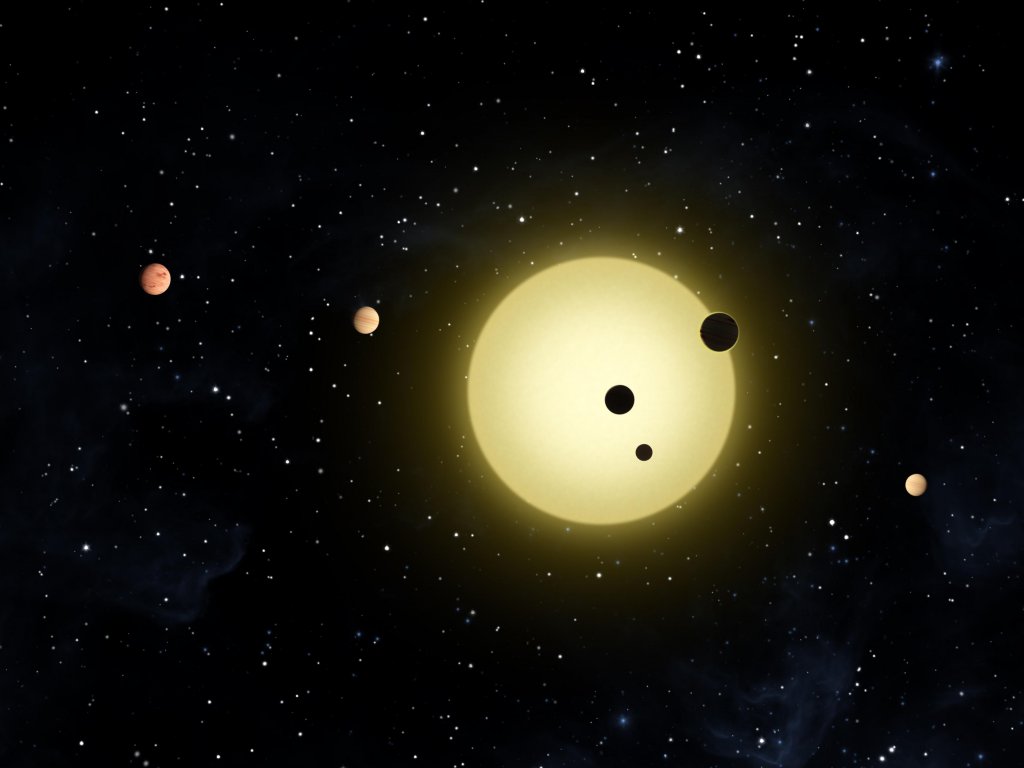
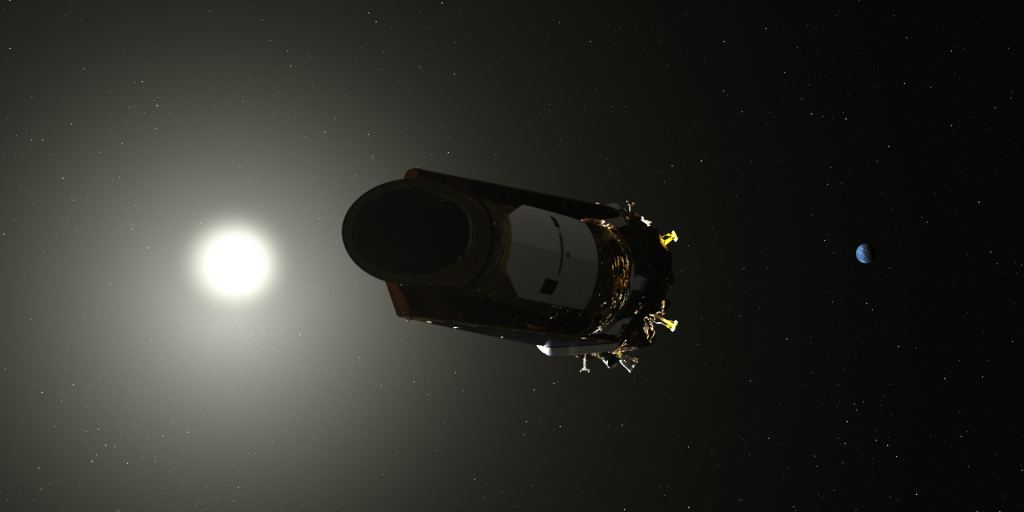

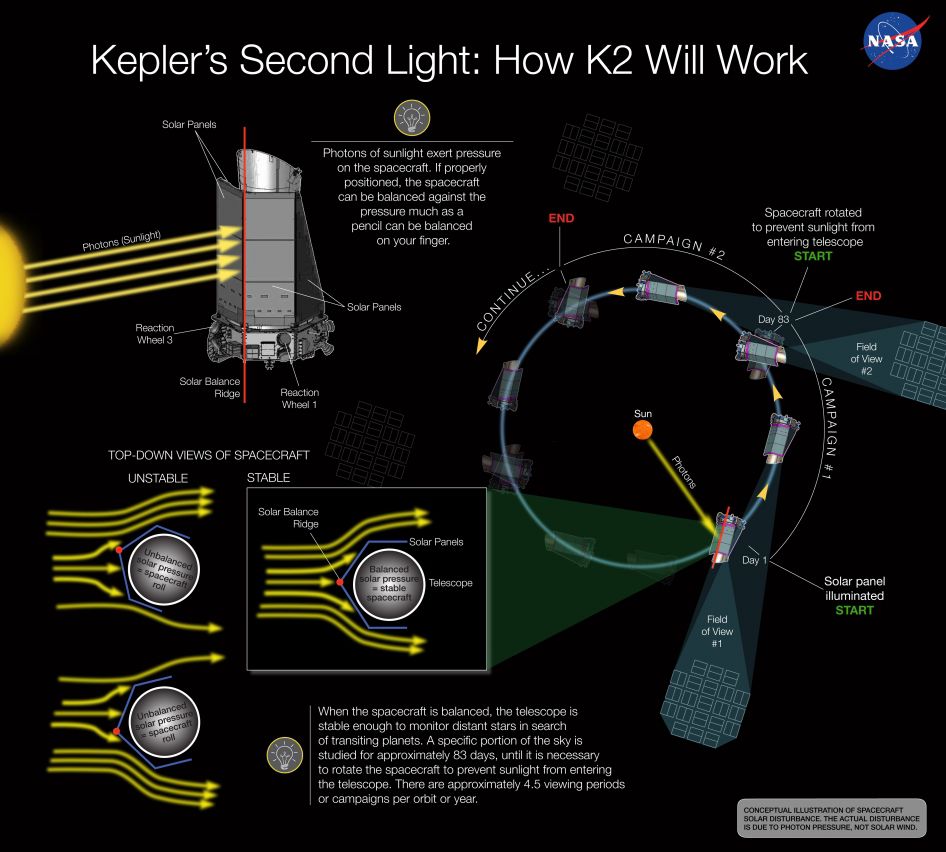
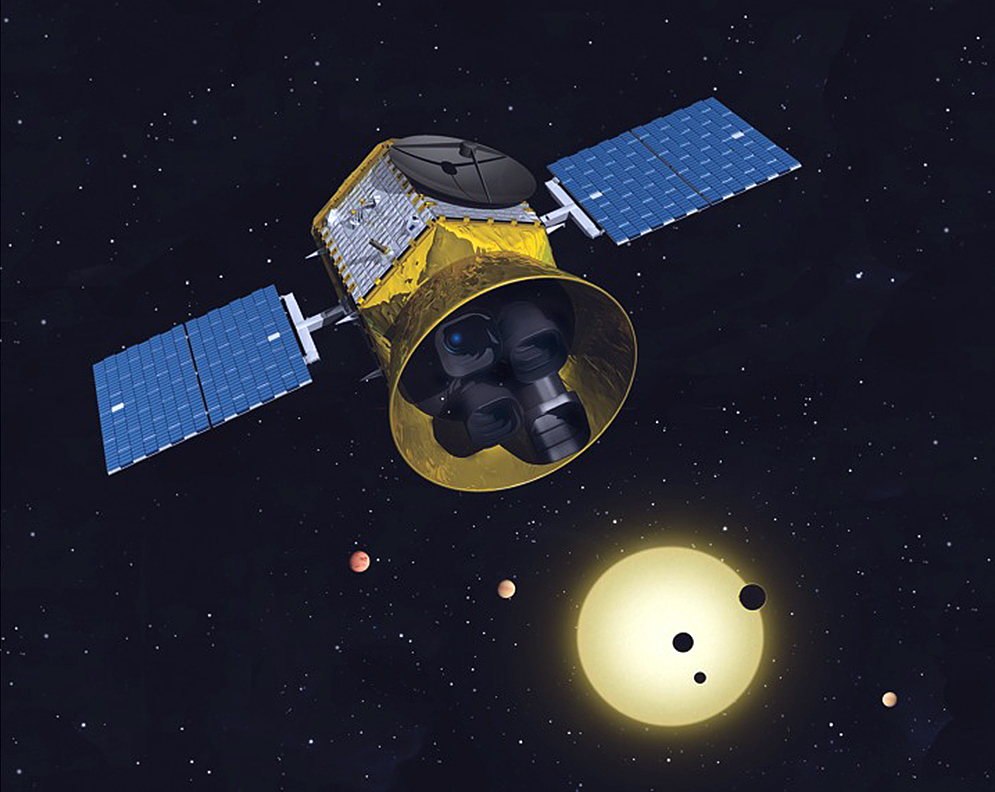
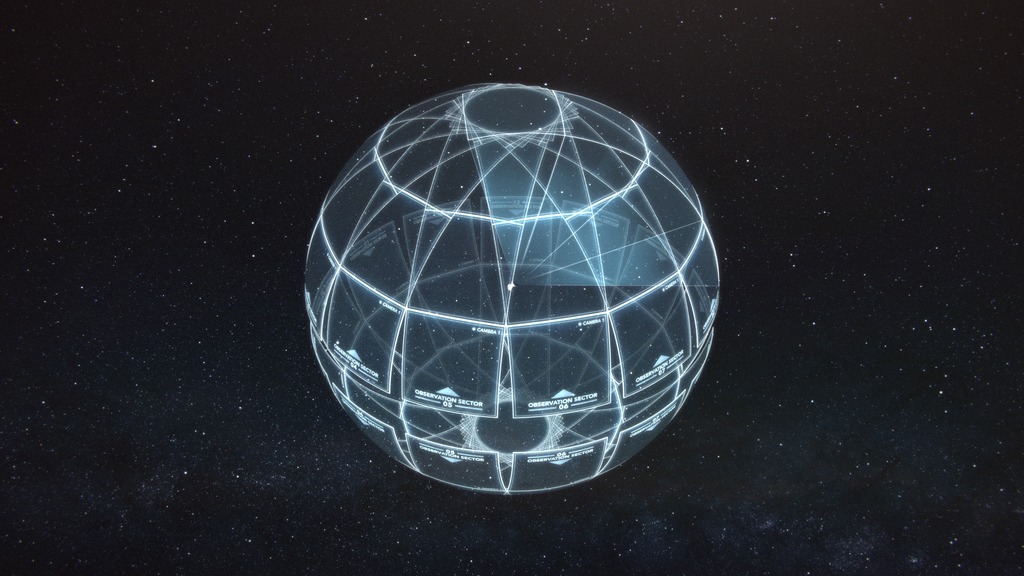
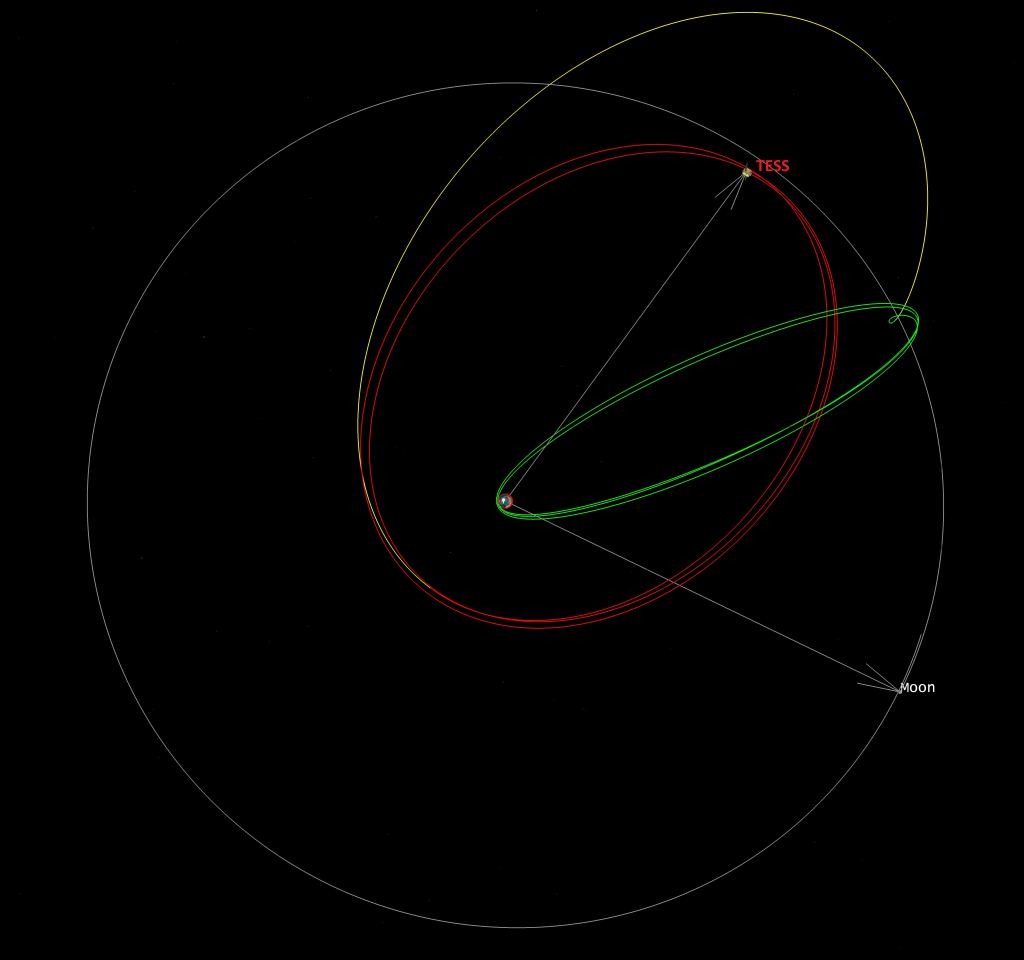
You can buy Universe Sandbox 2 game here: Hello and welcome to What Da Math! In this video, we will talk about new discovery from TESS telescope that you can read about here: Support this channel on Patreon to help me make this a full time job: Space Engine is available for free here: Enjoy and please subscribe. Twitter: X Twitter: Twitch
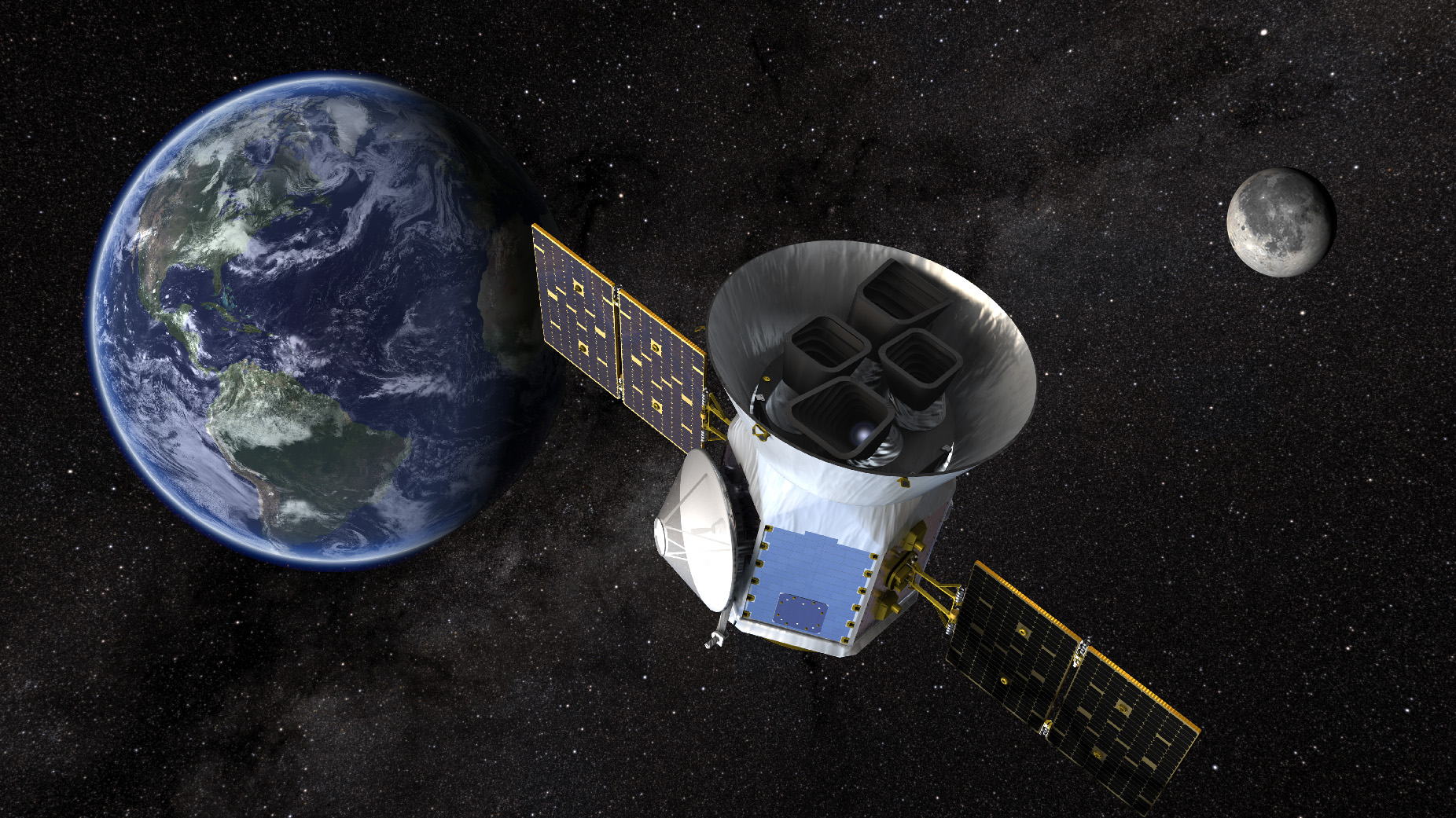
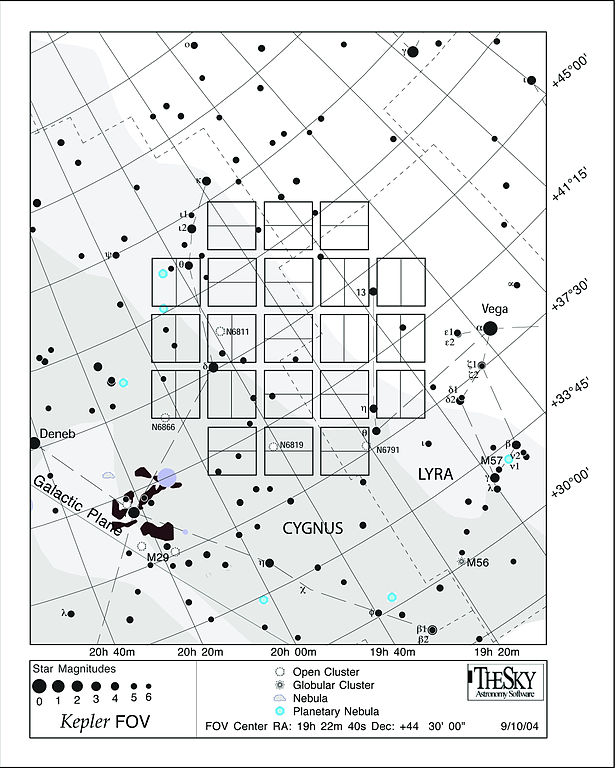
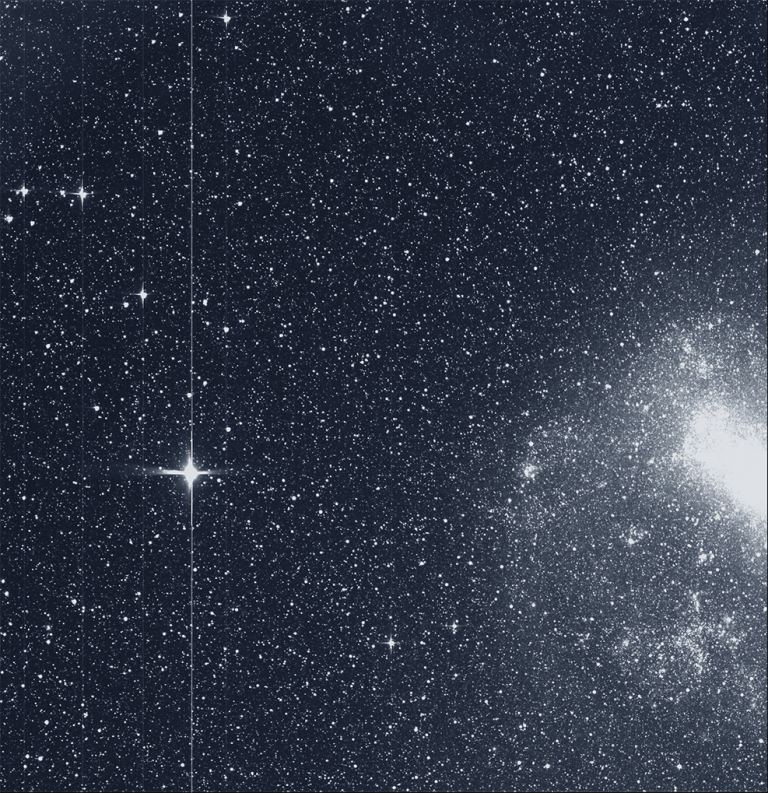
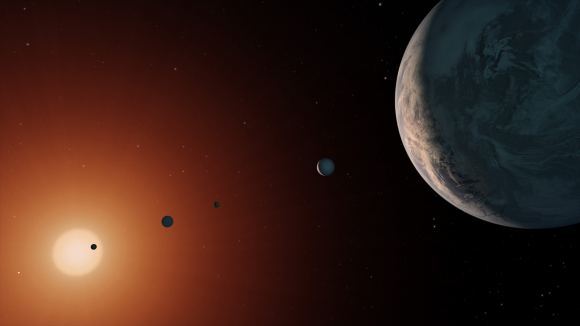
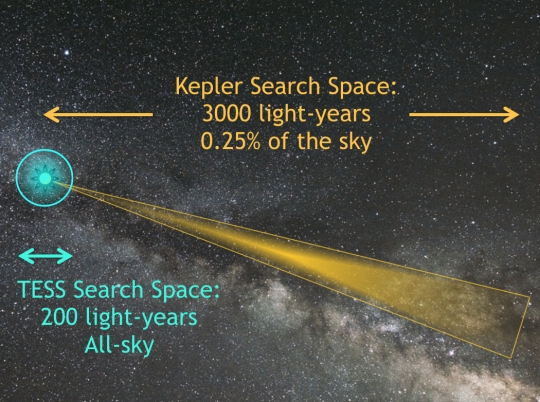
Image: The TESS search space compared to that of the Kepler Mission. Credit: Zach Berta-Thompson.
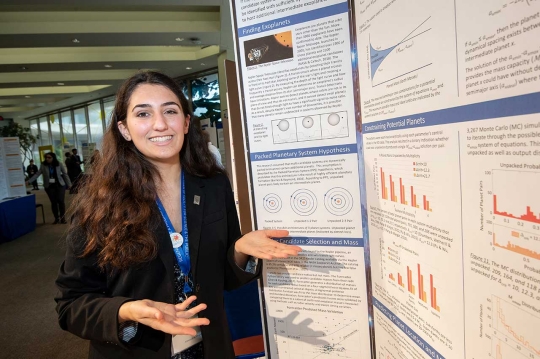
Image: Ana Humphrey won a $250,000 prize for calculating the potential for finding more planets outside our solar system. Credit: NASA GSFC.
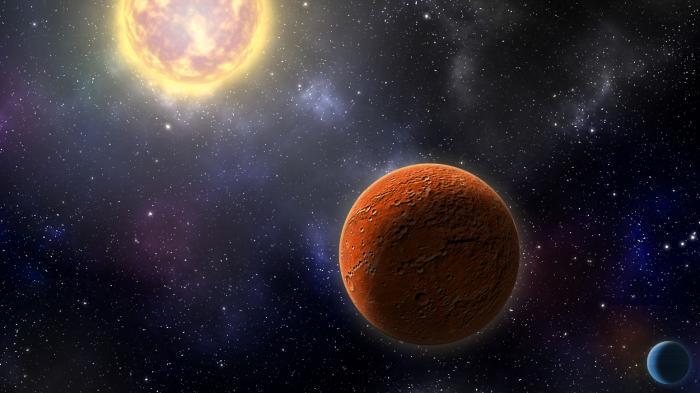
NASA’s new planet-hunting telescope, TESS (Transiting Exoplanet Survey Satellite), just found its first Earth-sized world. Though the Earth-sized planet, and its hot sub-Neptune companion, were first observed by TESS in January 2019, it’s taken until now to confirm their status with ground-based follow-up observations. The discovery is published in The Astrophysical Journal Letters.
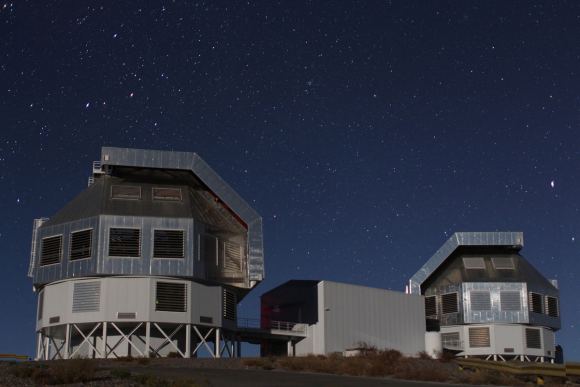
The Magellan Telescopes at Las Campanas Observatory, Chile. Image Credit: By Jan Skowron – Own work, CC BY-SA 3.0, Wilipeda source
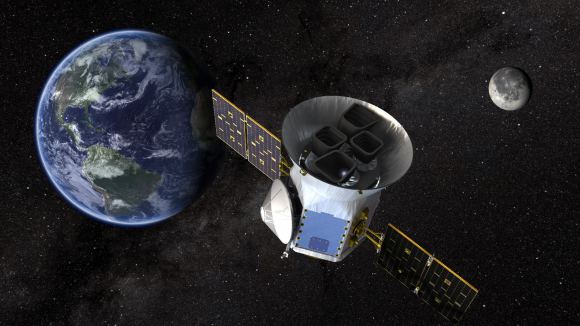
An artist’s illustration of the Transiting Exoplanet Survey Satellite. Credits: NASA Goddard Space Flight Center
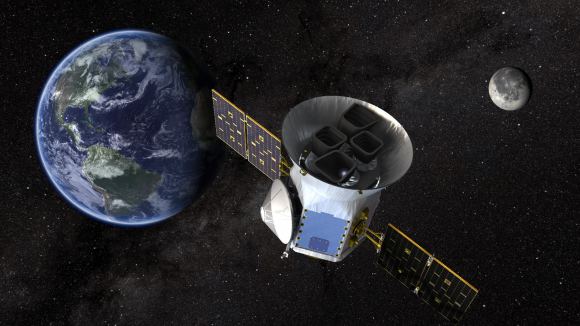
Artist’s illustration of the Transiting Exoplanet Survey Satellite (TESS). Credit: NASA’s Goddard Space Flight Center
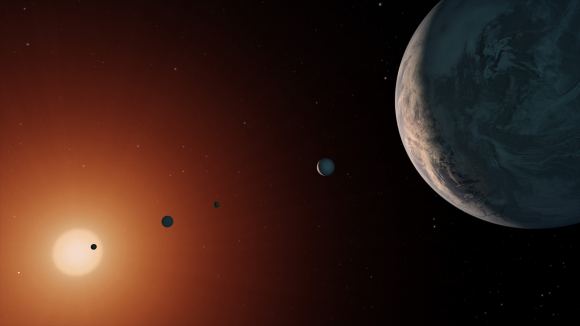
Artist’s illustration of what the TRAPPIST-1 system might look like from a vantage point near planet TRAPPIST-1f (at right). Credits: NASA/JPL-Caltech
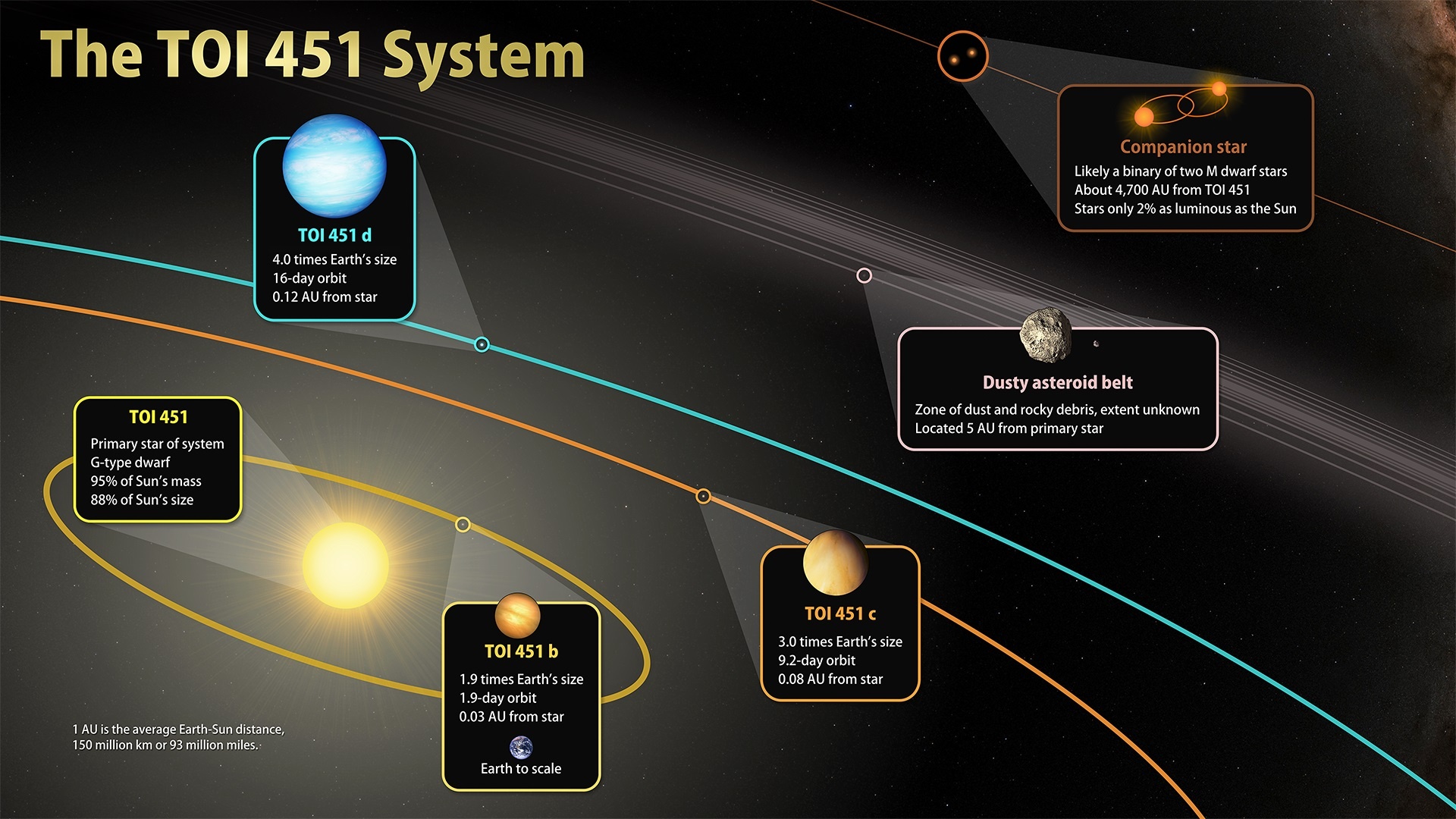
Ever since NASA’s Kepler Space Telescope was launched in 2009, there has an explosion in the study of the extrasolar planets. With the retirement of Kepler in 2018, it has fallen to missions like the Transiting Exoplanet Survey Satellite (TESS) to pick up where its predecessor left off. Using observations from TESS, an international team of astronomers recently discovered three exoplanets orbiting a young Sun-like star named TOI 451.
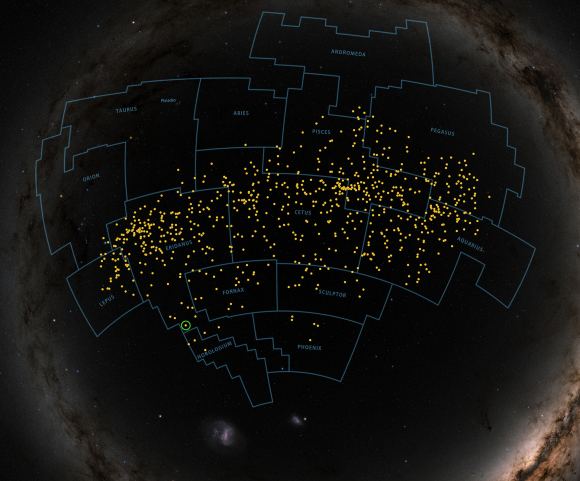
Yellow dots show the locations of known or suspected systems (with TOI 451 circled) that belong to the Pisces-Eridanus stream. Credit: NASA’s Goddard Space Flight Center
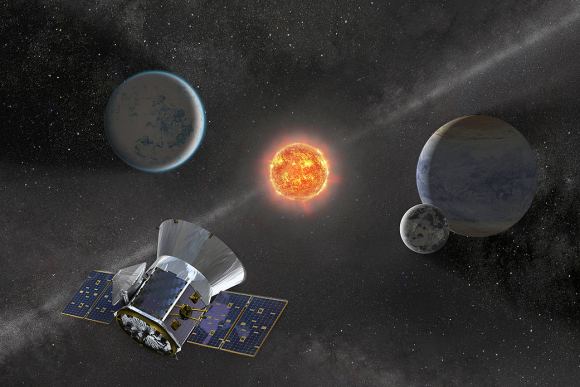
An artist’s rendition of the Transiting Exoplanet Survey Satellite (TESS). Credit: NASA’s Goddard Space Flight Center
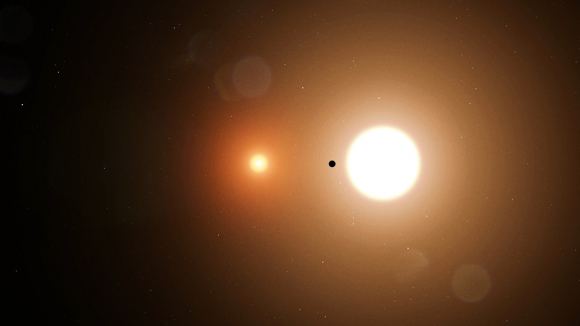
TOI 1338 b is a circumbinary planet orbiting its two stars. It was discovered by TESS. Image Credit: NASA’s Goddard Space Flight Center/Chris Smith
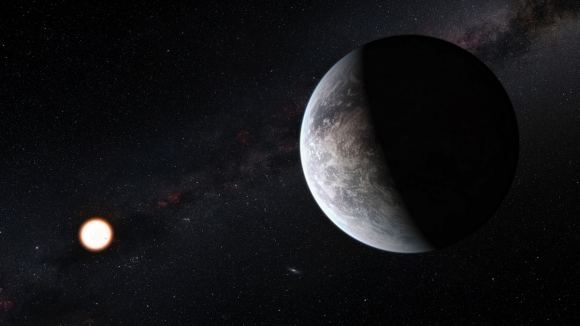
Artist’s impression of the rocky super-Earth HD 85512 b. Credit: ESO/M. Kornmesser
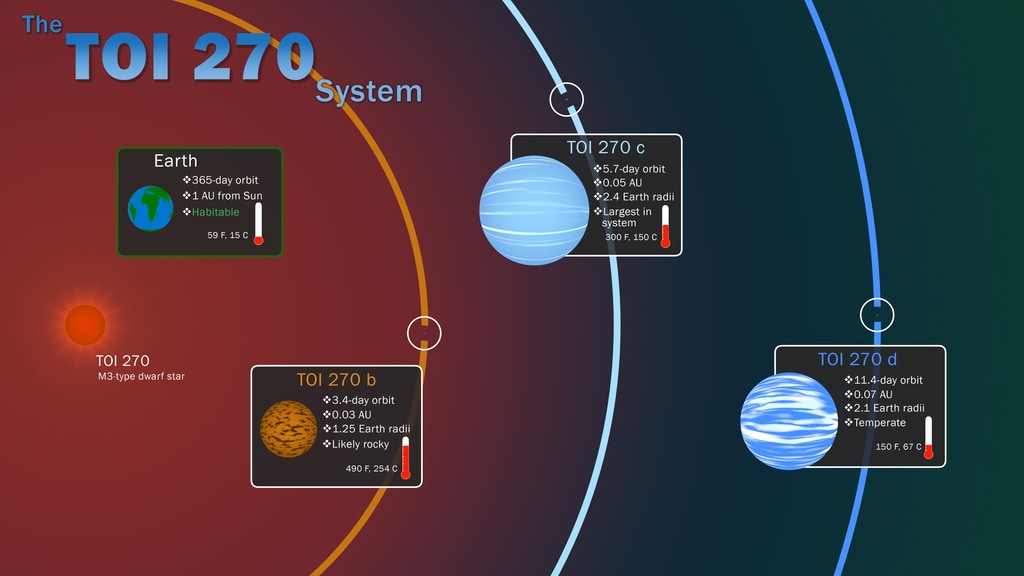
This infographic illustrates key features of the TOI 270 system, located about 73 light-years away in the southern constellation Pictor. The three known planets were discovered by NASA’s Transiting Exoplanet Survey Satellite through periodic dips in starlight caused by each orbiting world. Insets show information about the planets, including their relative sizes, and how they compare to Earth. Temperatures given for TOI 270’s planets are equilibrium temperatures, calculated without the warming effects of any possible atmospheres. Credit: NASA’s Goddard Space Flight Center/Scott Wiessinger
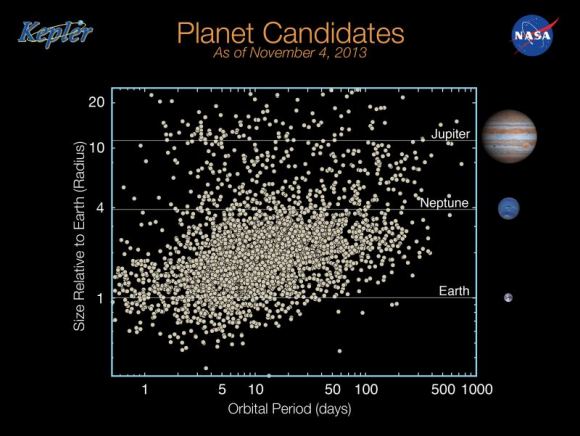
This scattergram of Kepler first three years of exoplanets shows that Kepler mostly found planets much larger than Earth. Many of the Kepler candidate exoplanets were orbiting very active stars, with so much stellar flaring and other activity that habitability is doubtful. Image Credit: NASA Ames/W. Stenzel

Because these planets are so close to their star, it’s natural to compare them with Jupiter and its moons. Image Credit: NASA’s Goddard Space Flight Center
-
Most binary systems are hard to detect and may contain more than two stars. In January 2021 the discovery of a new and bizarre sextuple system was reported where all the stars aligned perfectly creating a sextuple eclipsing star system. More strange is that the system seems to consist of three pairs of binary stars locked into an exotic dance. Contributor and EU advocate, Gareth Samuel, host of "See the Pattern”, builds a picture of how stars might evolve—in this case up to six stars—showing that the interaction of Birkeland currents together is an important aspect of this unusual, almost miraculous, sextuple star system structure. Gareth Samuel | See the Pattern • YouTube • Facebook • Twitter -- If you see a CC with this video, it means that subtitles are available. To find out which ones, click on the Gear Icon in the lower right area of the video box and click on “subtitles” in the drop-down box. Then click on the subtitle that you would like. The Thunderbolts Project — a Voice for the Electric Universe Become a Producer through the PATREON Rewards program... Subscribe to Thunderbolts eNewsletter Guides to the Electric Universe Electric Universe Books & Merch Electric Universe by Wal Thornhill Instagram Facebook Twitter @tboltsproject Ideas and/or concepts presented in this program do not necessarily express or represent the Electric Universe model or the views of The Thunderbolts Project or T-Bolts Group Inc. The Thunderbolts Project™ Trademark of T-Bolts Group Inc. a non-profit 501(c)(3) organization. Copyright © 2021 T-Bolts Group Inc. All rights reserved.
Recently, scientists found a cosmic rarity about 1,900 light-years away: a six-star system of three eclipsing binary stars. Find out what this means and why this discovery is a sensation in this video. If you like our videos, feel free to support us with a thumbs up, subscribe to SimplySpace, and stay tuned for more exciting videos coming your way in the future. Subscribe for more! ► Credit: NASA, ESA, ESO, SpaceX, Wikipedia, Shutterstock, ... #TheSimplySpaceEN

Illustration of the GJ 357 system. Credit: NASA’s Goddard Space Flight Center / Chris Smith
NASA’s Transiting Exoplanet Survey Telescope launched back in April, 2018. After a few months of testing, it was ready to begin mapping the southern sky, searching for planets orbiting stars relatively nearby. We’re just over a year into the mission now, and on July 18th, TESS has shifted its attention to the Northern Hemisphere, continuing the hunt for planets in the northern skies. As part of this shift, NASA has announced a handful of fascinating new planets turned up by TESS, including a couple of worlds in categories which have never been seen before. Farewell Kepler, Welcome TESS Our Book is out! Audio Podcast version: ITunes: RSS: What Fraser's Watching Playlist: Weekly email newsletter: : Astronomy Cast Support us at: More stories at: Twitch: Follow us on Twitter: @universetoday Like us on Facebook: Instagram - Team: Fraser Cain - @fcain / Fraser Cain @karlaii / Karla Thompson - Chad Weber - References: Tess first year New Explorer Mission Chooses the ‘Just-Right’ Orbit TESS Finds Its Smallest Planet Yet A Tiny Planet Confirmation of Toasty TESS Planet Leads to Surprising Find of Promising World hNASA’s TESS Mission Scores ‘Hat Trick’ With 3 New Worlds
We’re now entering the final days for NASA’s Kepler Space Telescope. It’s running out of fuel and already crippled by the loss of its reaction wheels. In just a few months NASA will shut it down for good. That is sad, but don’t worry, NASA’s next planet hunting spacecraft, the Transiting Exoplanet Survey Telescope is on the launchpad and ready to fly to space to take over where Kepler left off. Finding Earth-sized worlds in the Milky Way. Sign up to my weekly email newsletter: Support us at:Support us at: : More stories at Follow us on Twitter: @universetoday Like us on Facebook: Google+ - Instagram - Team: Fraser Cain - @fcain / frasercain@gmail.com /Karla Thompson - @karlaii Chad Weber - Chloe Cain - Instagram: @chloegwen2001
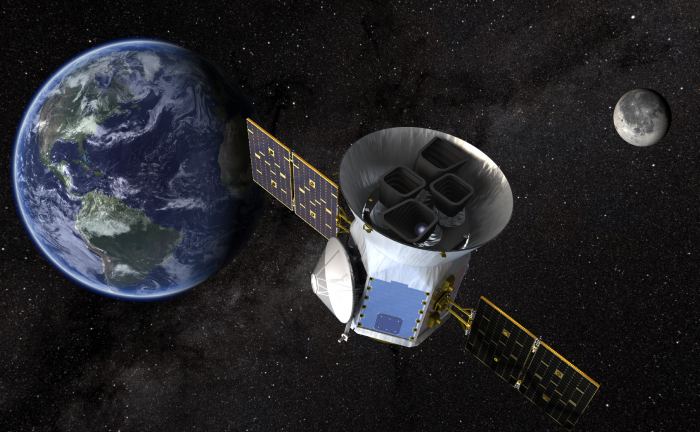
An artist’s illustration of the Transiting Exoplanet Survey Satellite.
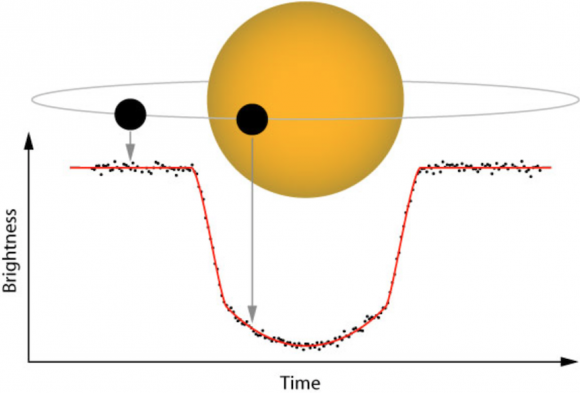
Illustration of the transit method, where a planet passes directly in front of its star, dimming it slightly. Credit: NASA
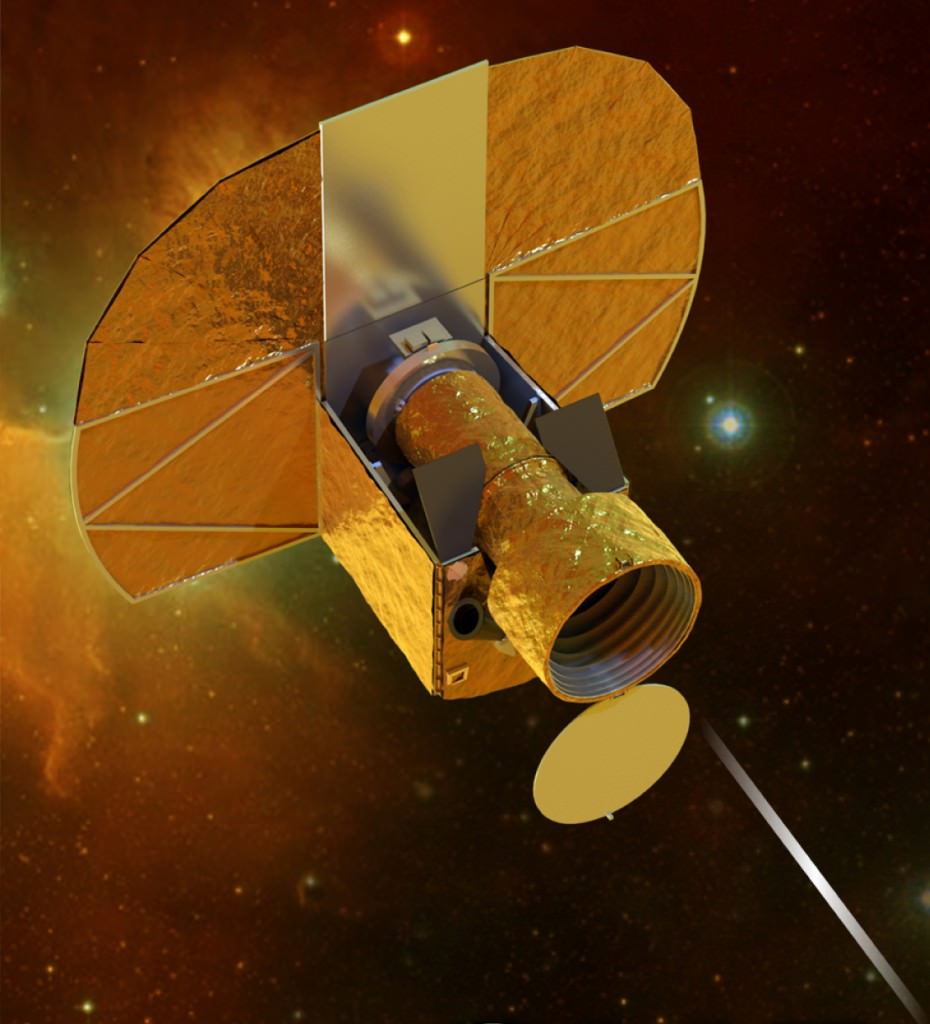
ESA’s CHEOPS mission is due for launch later this year (2019), it will perform follow on observations of candidate exoplanets discovered so far, trying to narrow down their size and orbital periods. Thanks to CHEOPS, the number of confirmed exoplanets will start to catch up with the number of planetary candidates.
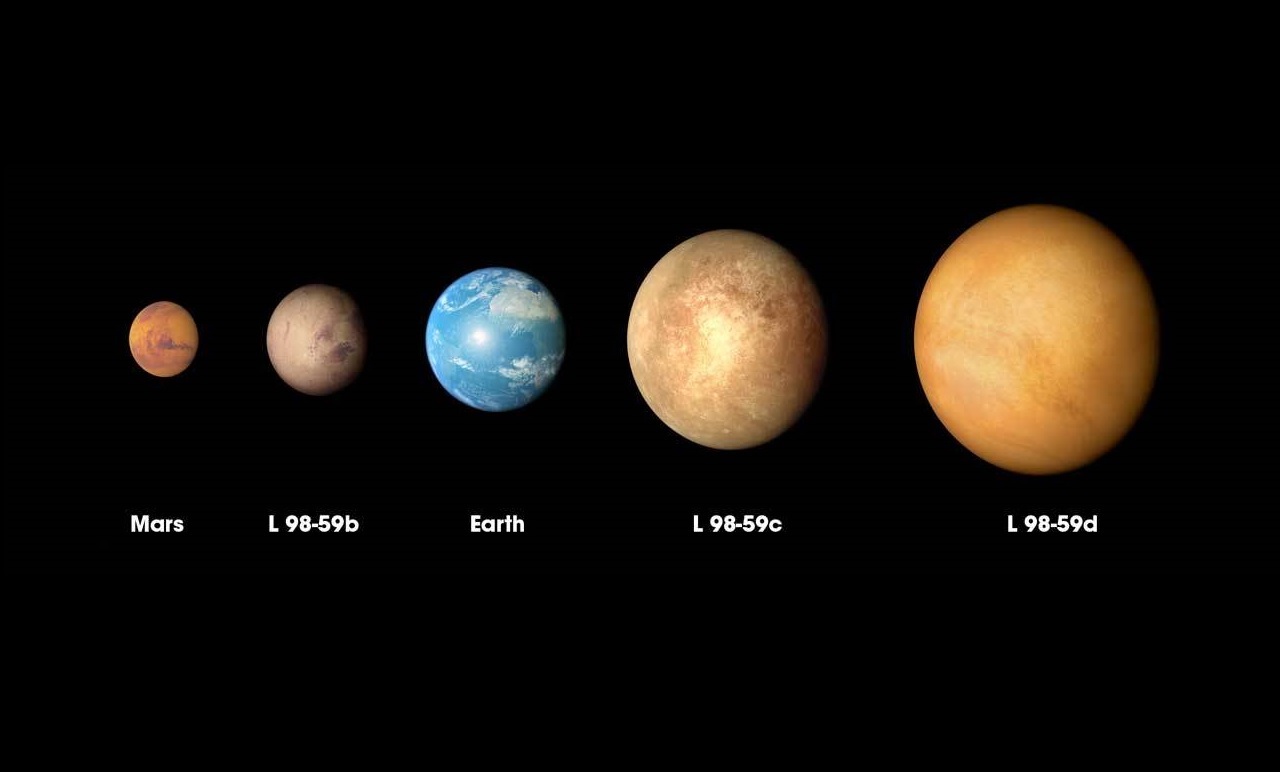
The three planets discovered in the L98-59 system by NASA’s Transiting Exoplanet Survey Satellite are compared to Mars and Earth in order of increasing size in this illustration. Credit: NASA’s Goddard Space Flight Center
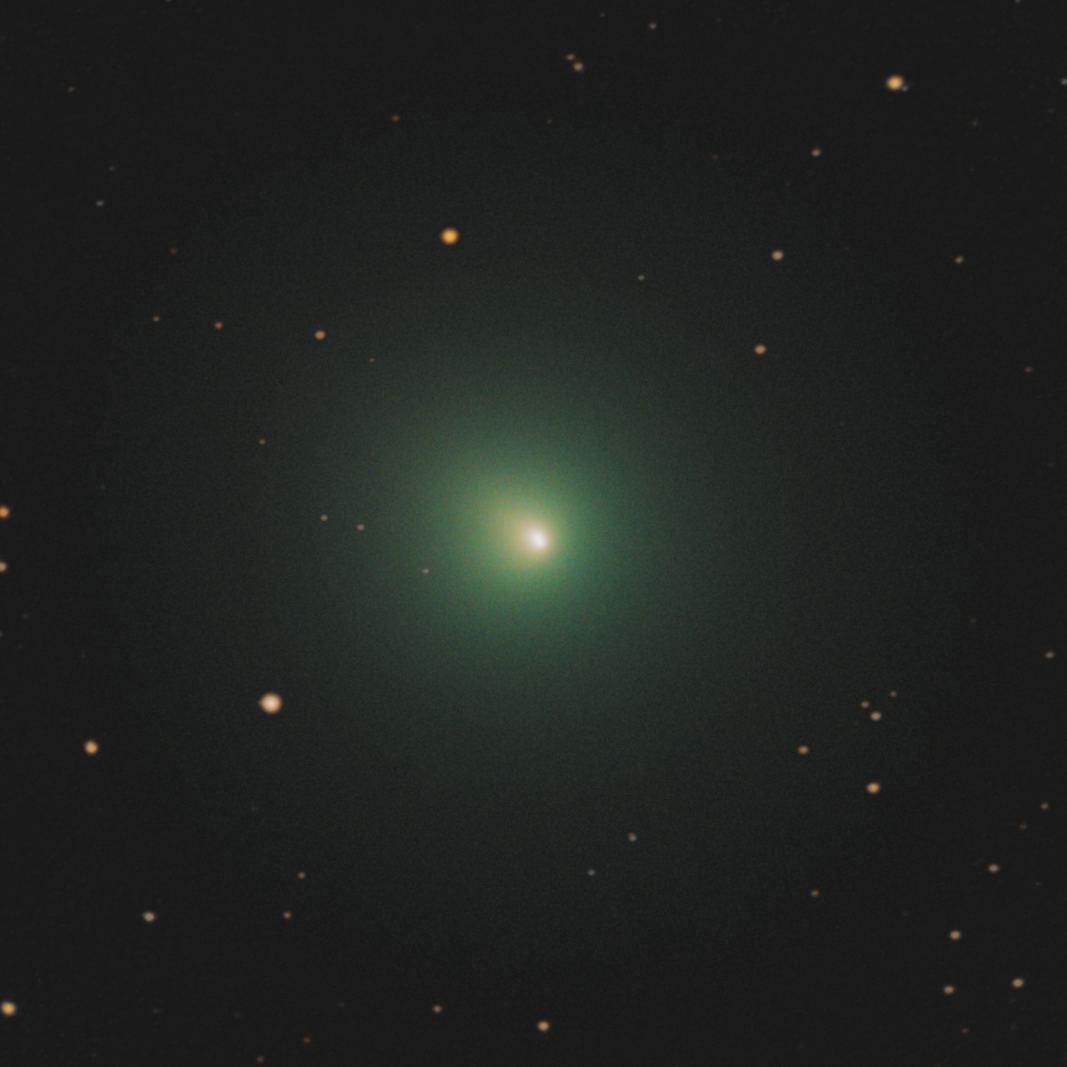
TESS, the Transiting Exoplanet Survey Satellite, has imaged an outburst from the comet 46P/Wirtanen. It caught the outburst in what NASA is calling the clearest images yet of a comet outburst from start to finish. A comet outburst is a significant but temporary increase in the comet’s activity, outside of the normal sunlight-driven vaporization of ices that creates a comet’s coma and tail.
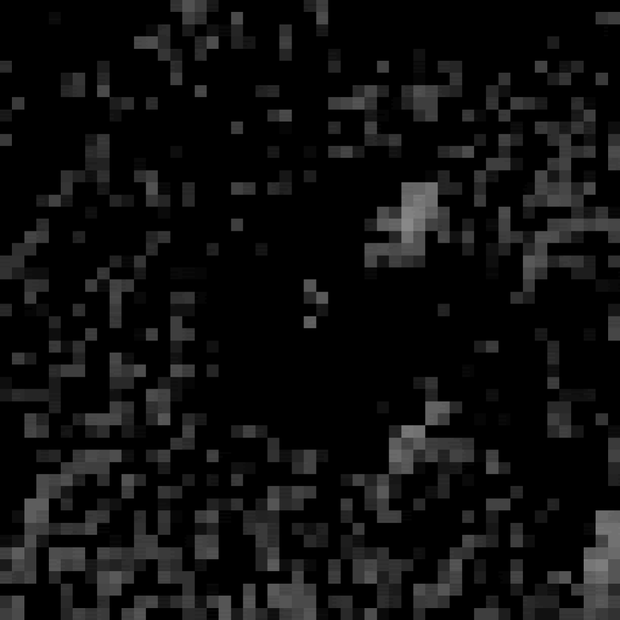
his animation shows an explosive outburst of dust, ice and gases from comet 46P/Wirtanen that occurred on September 26, 2018 and dissipated over the next 20 days. The images, from NASA’s TESS spacecraft, were taken every three hours during the first three days of the outburst. Credits: Farnham et al./NASA
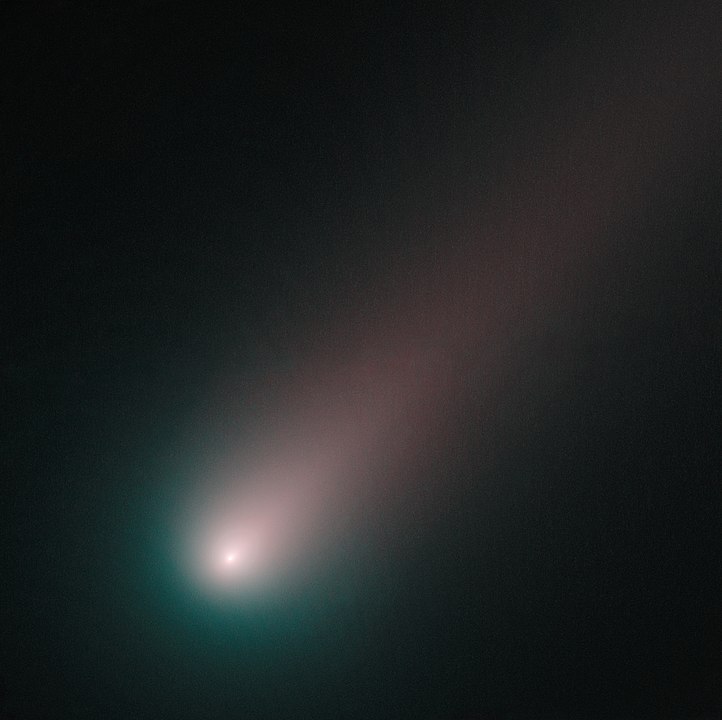
This 2013 Hubble Space Telescope image of comet ISON shows the distinct parts of a comet. The round coma around ISON’s nucleus is blueand the tail has a redder hue. Ice and gas in the coma reflect blue light from the Sun, while dust grains in the tail reflect more red light than blue light. Image Credit: , By ESA/Hubble, CC BY 4.0 Wikipedia

IMAGE sequence showing the outburst’s effect on Wirtanen’s coma. Panels (2) and (3) bracket the onset of the outburst (September 26.12) and (4)–(6) show the bright central condensation and the rapidly expanding gas cloud. Each panel is 400,000 km across, with north up and east to the left. The light blue circle denotes a 25,000 km radius aperture. Image Credit: Farnham et al, 2019.
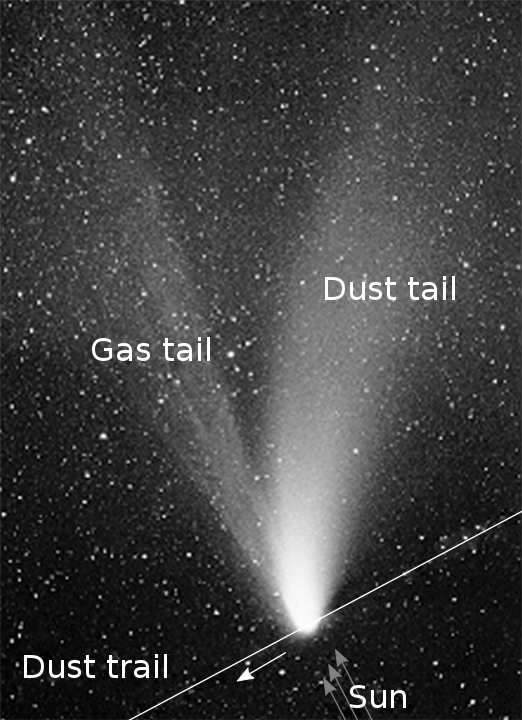
An artist’s diagram of a comet showing the gas tail, the dust tail, and the dust trail. Image Credit: By NASA Ames Research Center/K. Jobse, P. Jenniskens
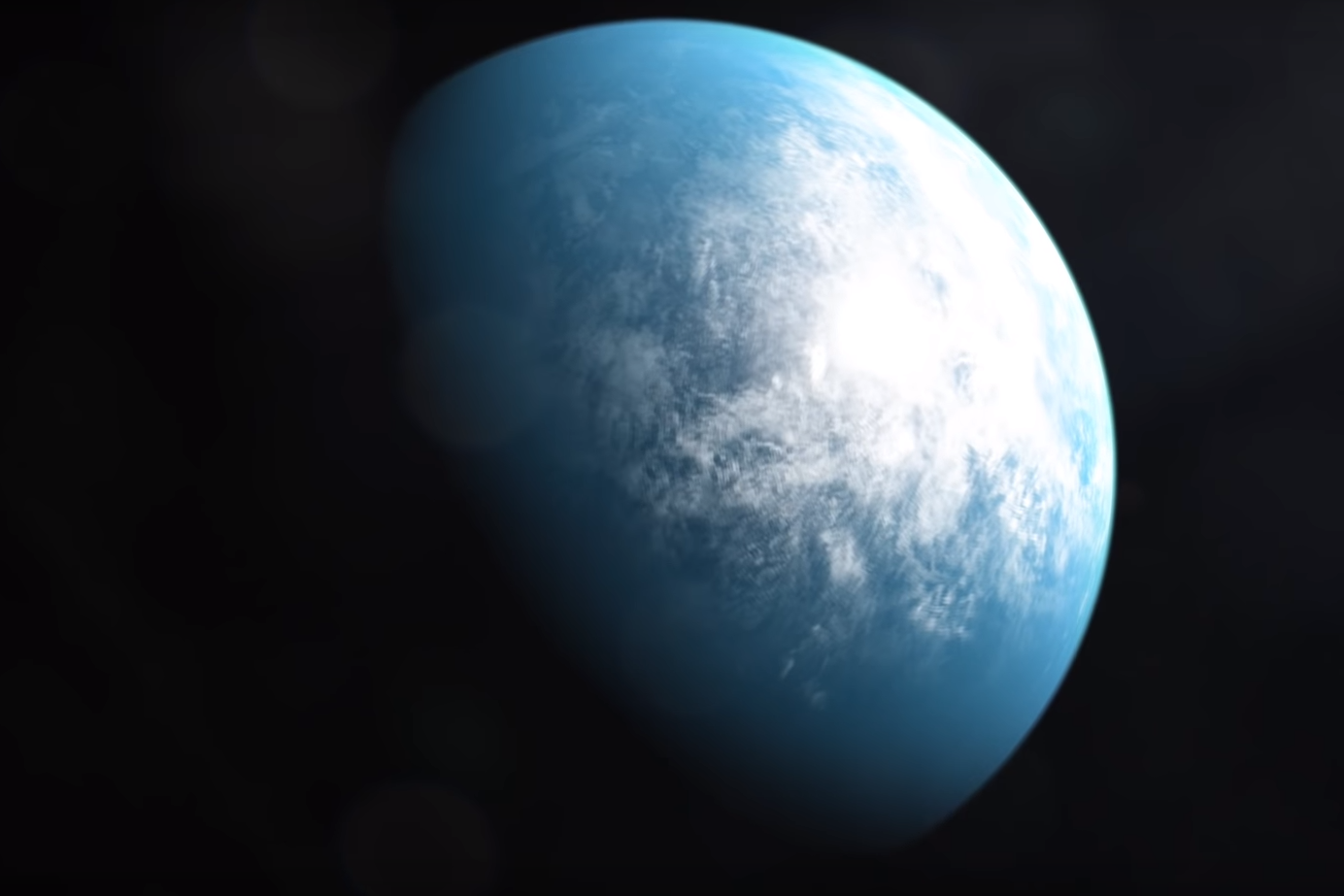
The planet is called TOI 700 d and it’s about 100 light years away from Earth. It orbits TOI 700, a cool M-dwarf (red dwarf) star in the constellation Dorado. This is a key discovery for TESS, since it was designed to ferret out Earth-size planets in other solar systems.

TOI 700 d is within the star’s habitable zone, where liquid water could exist on the planet’s surface, given the right atmosphere and pressure conditions. The two innermost planets, TOI 700 b and c, are too close to the star for liquid water. Image Credit: NASA’s Goddard Space Flight Center

Exoplanetology has been on a tear recently. This is largely due to an abundance of data collected by a new generation of satellites, one of which is the Transiting Exoplanet Survey Satellite (TESS). Now the project has reached a new milestone with another release of data – 2,200 planet candidates collected, far surpassing the 1,600 expected candidates in the mission’s first two years. Now comes a potentially even more daunting task – following up with each of them.
Zoom into the first sky sector observed by NASA’s Transiting Exoplanet Survey Satellite (TESS) and learn more about the new worlds it has discovered. Credit: NASA/MIT/TESS License Creative Commons Attribution license (reuse allowed)
Researchers working with data from NASA’s Transiting Exoplanet Survey Satellite (TESS) have discovered the mission’s first circumbinary planet, a world orbiting two stars. The planet, called TOI 1338b, is around 6.9 times larger than Earth, or between the sizes of Neptune and Saturn. It lies in a system 1,300 light-years away in the constellation Pictor. The stars in the system make an eclipsing binary, which occurs when the stellar companions circle each other in our plane of view. One is about 10% more massive than our Sun, while the other is cooler, dimmer and only one-third the Sun’s mass. TOI 1338b’s transits are irregular, between every 93 and 95 days, and vary in depth and duration thanks to the orbital motion of its stars. TESS only sees the transits crossing the larger star — the transits of the smaller star are too faint to detect. Although the planet transits irregularly, its orbit is stable for at least the next 10 million years. The orbit’s angle to us, however, changes enough that the planet transit will cease after November 2023 and resume eight years later. Read more: Music: "Albatross" from Universal Production Music. Video credit: NASA's Goddard Space Flight Center Chris Smith (USRA): Lead Producer Chris Smith (USRA): Lead Animator Jeanette Kazmierczak (University of Maryland College Park): Lead Science Writer Chris Smith (USRA): Writer Veselin Kostov (NASA Postdoctoral Fellow): Scientist This video is public domain and along with other supporting visualizations can be downloaded from NASA Goddard's Scientific Visualization Studio at: If you liked this video, subscribe to the NASA Goddard YouTube channel: Like our videos? Subscribe to NASA's Goddard Shorts HD podcast: Follow NASA’s Goddard Space Flight Center · Instagram · Twitter NASA GODDARD · Twitter NASA GODDARD PICTURES · Facebook: · Flickr

Globe showing what part of the sky TESS spent its viewing time on. Credit: NASA / MIT / TESS
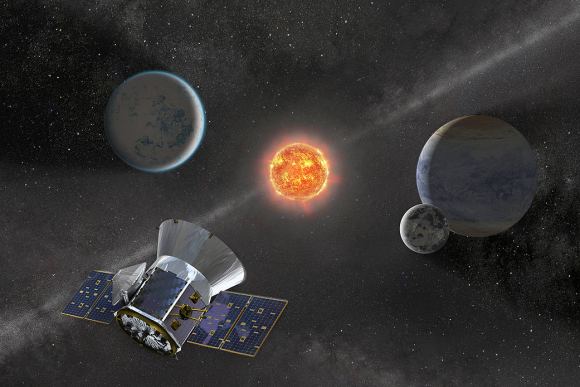
Illustration of NASA’s Transiting Exoplanet Survey Satellite observing an M dwarf star with orbiting planets. Image Credit: NASA’s Goddard Space Flight Center.
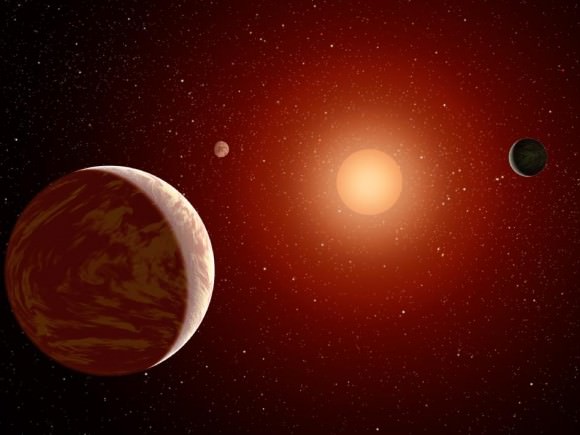
An artist’s conception of a red dwarf solar system. Red dwarfs can produce a lot of flaring activity, which is problematic for the habitability of their planets. Credit: NASA/JPL-Caltech.
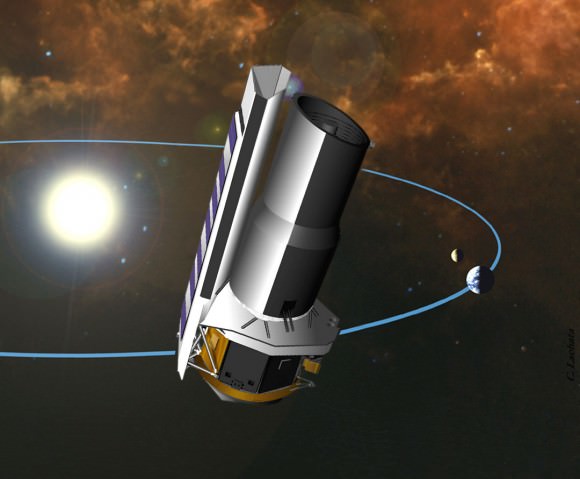
The Spitzer Space Telescope observatory trails behind Earth as it orbits the Sun. It provided confirming follow-up observations of TOI 700 d and its neighbors. Credit: NASA/JPL-Caltech
NASA's Transiting Exoplanet Survey Satellite (TESS) has discovered its first Earth-size planet in its star's habitable zone, the range of distances where conditions may be just right to allow the presence of liquid water on the surface. Scientists confirmed the find, called TOI 700 d, using NASA's Spitzer Space Telescope and have modeled the planet's potential environments to help inform future observations. TOI 700 is a small, cool M dwarf star located just over 100 light-years away in the southern constellation Dorado. It's roughly 40 of the Sun's mass and size and about half its surface temperature. The star appears in 11 of the 13 sectors TESS observed during the mission's first year, and scientists caught multiple transits by its three planets. The innermost planet, called TOI 700 b, is almost exactly Earth-size, is probably rocky and completes an orbit every 10 days. The middle planet, TOI 700 c, is 2.6 times larger than Earth -- between the sizes of Earth and Neptune -- orbits every 16 days and is likely a gas-dominated world. TOI 700 d, the outermost known planet in the system and the only one in the habitable zone, measures 20 larger than Earth, orbits every 37 days and receives from its star 86% of the energy that the Sun provides to Earth. All of the planets are thought to be tidally locked to their star, which means they rotate once per orbit so that one side is constantly bathed in daylight. The Spitzer data increased scientists' confidence that TOI 700 d is a real planet and sharpened their measurements of its orbital period by 56% and its size by 38%. It also ruled out other possible astrophysical causes of the transit signal, such as the presence of a smaller, dimmer companion star in the system. While the exact conditions on TOI 700 d are unknown, scientists used current information, like the planet's size and the type of star it orbits, and modeled 20 potential environments for TOI 700 d to gauge if any version would result in surface temperatures and pressures suitable for habitability. One simulation included an ocean-covered TOI 700 d with a dense, carbon-dioxide-dominated atmosphere similar to what scientists suspect surrounded Mars when it was young. The model atmosphere contains a deep layer of clouds on the star-facing side. Another model depicts TOI 700 d as a cloudless, all-land version of modern Earth, where winds flow away from the night side of the planet and converge on the point directly facing the star. Music credit: "Family Tree" from Universal Production Music Read more: Credit: NASA's Goddard Space Flight Center Scott Wiessinger (USRA): Lead Producer Chris Smith (USRA): Lead Animator Jeanette Kazmierczak (University of Maryland College Park): Lead Science Writer Gabrielle Engelmann-Suissa (USRA): Scientist Barb Mattson (University of Maryland College Park): Narrator Geronimo Villanueva (Catholic University of America): Visualizer This video is public domain and along with other supporting visualizations can be downloaded from the Scientific Visualization Studio at: If you liked this video, subscribe to the NASA Goddard YouTube channel: Follow NASA’s Goddard Space Flight Center · Instagram · Twitter Nasa Goddard · Twitter Nasa Goddard Pics · Facebook: · Flickr
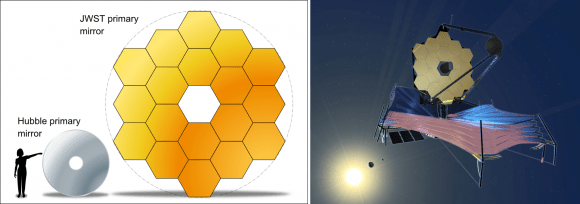
The James Webb Space Telescope will provide more data on TOI 700 d, and other exoplanets, in the future. It’ll provide the acuity and sensitivity needed to study the spectra of Earth-sized exo-planets. (Credit: NASA)
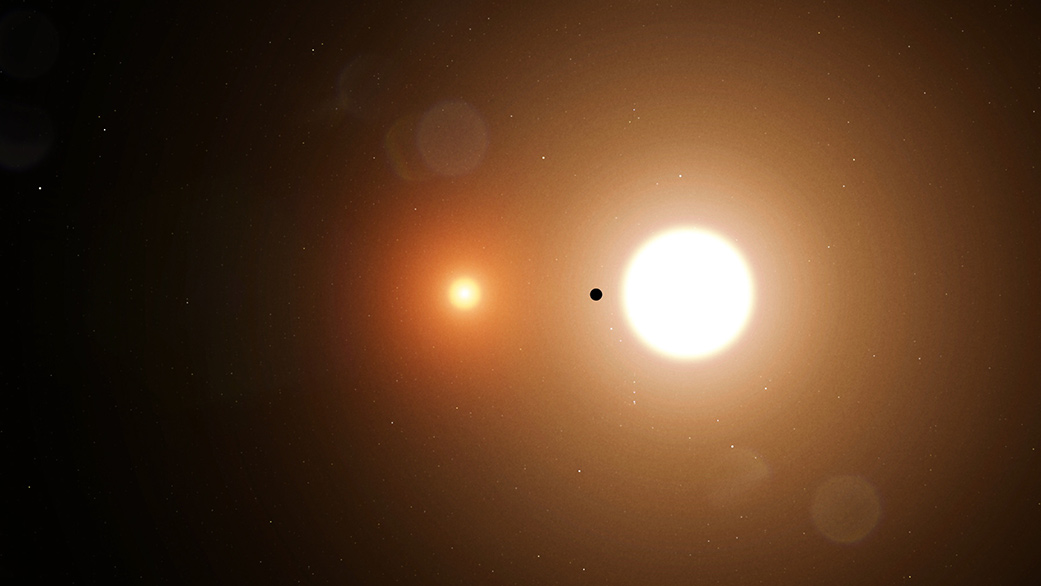
he intern’s name is Wolf Cukier and he was a summer intern at NASA’s Goddard Space Flight Center, the agency that manages TESS. Zooniverse citizen scientists in the Planet Hunters TESS program captured variations in star brightness in TESS data and uploaded them. Cukier was examining those uploads more closely when he came across the data from TOI 1338, a binary star system about 1300 light years away in the constellation Pictor.
Researchers working with data from NASA’s Transiting Exoplanet Survey Satellite (TESS) have discovered the mission’s first circumbinary planet, a world orbiting two stars. The planet, called TOI 1338b, is around 6.9 times larger than Earth, or between the sizes of Neptune and Saturn. It lies in a system 1,300 light-years away in the constellation Pictor. The stars in the system make an eclipsing binary, which occurs when the stellar companions circle each other in our plane of view. One is about 10% more massive than our Sun, while the other is cooler, dimmer and only one-third the Sun’s mass. TOI 1338b’s transits are irregular, between every 93 and 95 days, and vary in depth and duration thanks to the orbital motion of its stars. TESS only sees the transits crossing the larger star — the transits of the smaller star are too faint to detect. Although the planet transits irregularly, its orbit is stable for at least the next 10 million years. The orbit’s angle to us, however, changes enough that the planet transit will cease after November 2023 and resume eight years later. Read more: Music: "Albatross" from Universal Production Music. Video credit: NASA's Goddard Space Flight Center Chris Smith (USRA): Lead Producer Chris Smith (USRA): Lead Animator Jeanette Kazmierczak (University of Maryland College Park): Lead Science Writer Chris Smith (USRA): Writer Veselin Kostov (NASA Postdoctoral Fellow): Scientist This video is public domain and along with other supporting visualizations can be downloaded from NASA Goddard's Scientific Visualization Studio at: If you liked this video, subscribe to the NASA Goddard YouTube channel: https://www.youtube.com/NASAGoddard"> Follow NASA’s Goddard Space Flight Center · Instagram · Twitter · Twitter NASA GODDARD Pics · Facebook: · Flickr
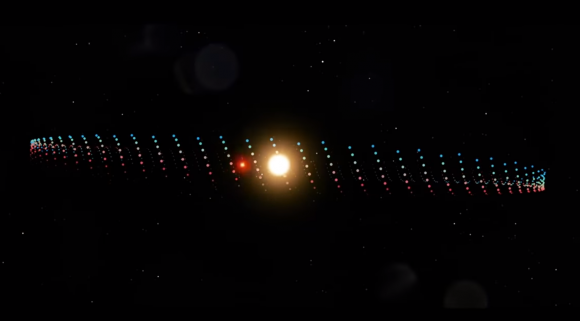
The angle of TOI 1338 b’s orbit around the stars changes over time, so after 2023, there will be an eight year gap in transits from our point of view. This gap leads astronomers to believe that there are many other circumbinary planets out there, but we have to be observing at the right time to find them. Image Credit: NASA Goddard Space Flight Center.
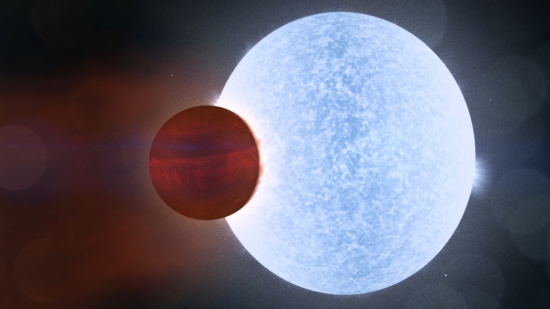
Image: Observations from NASA’s Transiting Exoplanet Survey Satellite (TESS) have revealed new details about KELT-9b’s environment. The planet follows a close, polar orbit around a squashed star with different surface temperatures, factors that make peculiar seasons for KELT-9b. The planet’s transits begin near one of the star’s hot, bright poles and progress toward the cooler, dimmer equator. Credit: NASA’s Goddard Space Flight Center.
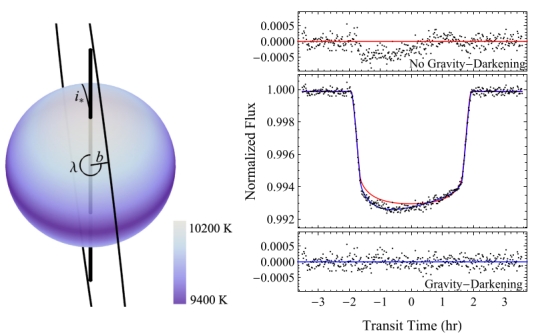
Image: This is Figure 2 from the paper. Caption: (Left) KELT-9 b begins its transit near the star’s hot pole and moves toward the star’s cooler equator. Our transit analysis directly measures the stellar inclination ( i ), the planet’s projected alignment (λ), and the orbital inclination (i.e., the impact parameter b). We find that KELT-9 varies in effective temperature by ∼800 K between its hot poles and cooler equator. (Right) KELT-9 b’s phase-folded primary transit from TESS. The transit depth steadily decreases throughout the eclipse, indicating that KELT-9 b begins its transit near one of the host star’s hotter poles and moves toward the dimmer stellar equator. Credit: Ahlers et al.
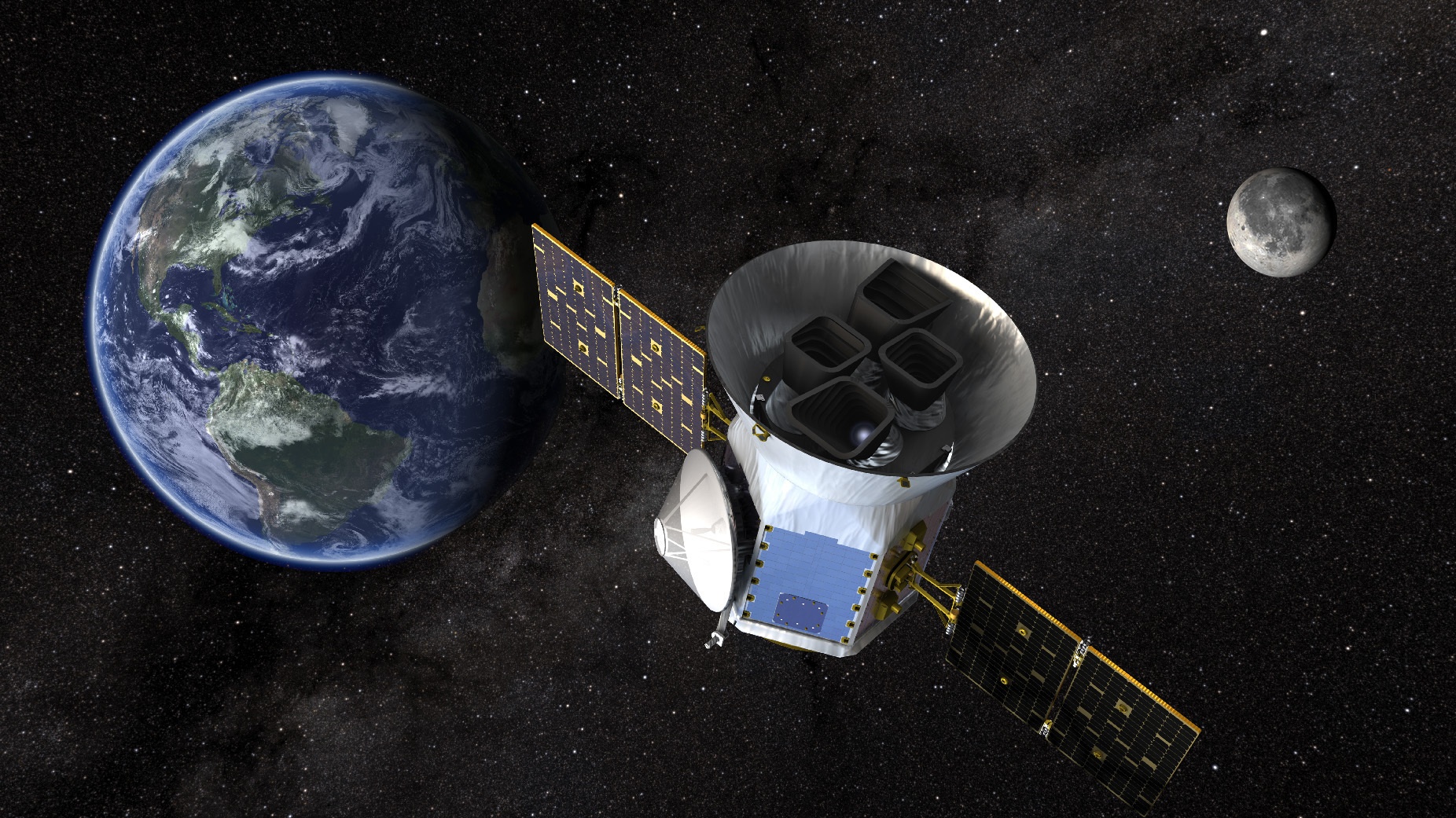
Before NASA’s TESS (Transiting Exoplanet Survey Satellite) mission launched in 2018, astronomers tried to understand what it would find in advance. One study calculated that TESS would find between 4430 and 4660 new exoplanets during its primary two-year-long mission.
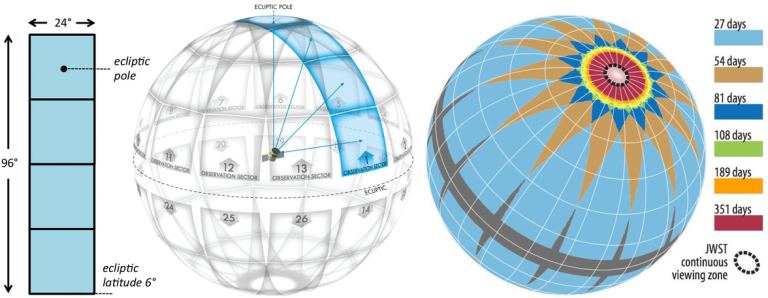
Left: The instantaneous combined field of view of the four TESS cameras. Middle: Subdivision of the celestial sphere into 26 observation sectors (13 per hemisphere). Right: Duration of observations on the celestial sphere, taking into account the overlap between sectors. The dashed black circle enclosing the ecliptic pole shows the region which JWST will be able to observe at any time. Image Credit: By NASA – Public Domain, (Wkipedia)
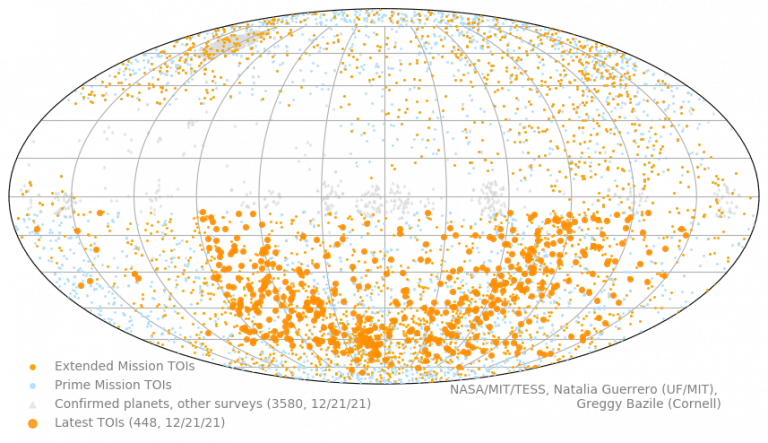
Over 5,000 exoplanet candidates crowd the sky on this map. The TESS Science Office at MIT released the most recent batch of TESS Objects of Interest (large orange points on the map) on Dec. 21,2021 boosting the catalogue to the new 5,000-count milestone. When the next batch of TOIs from TESS’s second year of extended mission time is released, the northern sky will likely be full of large orange points, too. Image Credits: NASA/MIT/TESS.
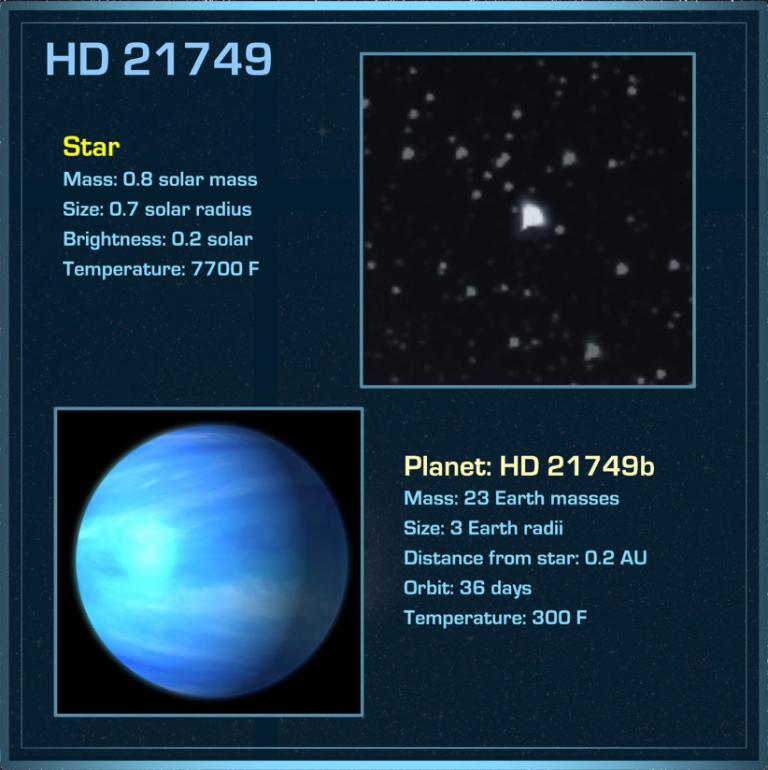
This is an artist’s illustration of the exoplanet HD21749b. It’s extraordinarily close to its star and orbits in only 36 days. TESS has shown us that the planets in our own Solar System don’t represent a norm. Image Credit: By NASA/MIT/TESS

This image depicts the survey sectors for the first half of TESS Extended Mission, known as Cycle 3. TESS Cycle 3 observed fields in the Southern Ecliptic Hemisphere during the first year of the extended mission, from July 2020 until June 2021. The cadence was higher in the extended mission, resulting in more complete data. It covered sectors 27-39. Credit: MIT.
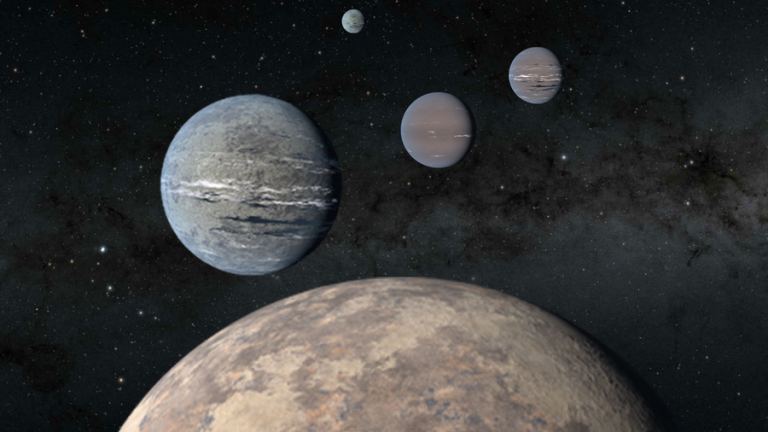
An artist’s rendering of five planets orbiting TOI-1233, four of which TESS discovered. Credit: NASA/JPL-Caltech
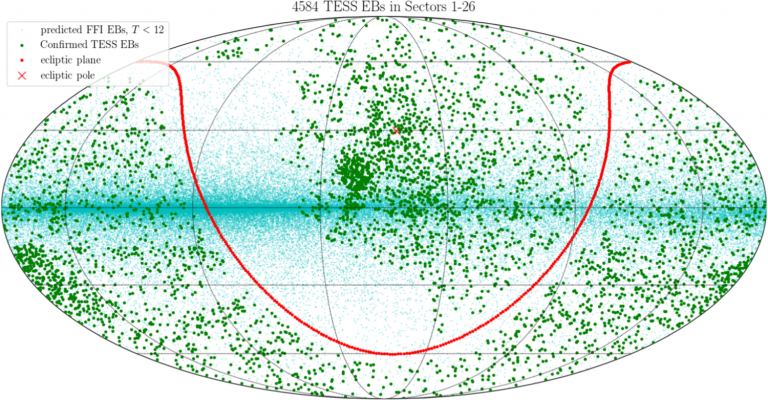
TESS found 4584 eclipsing binaries (EBs) in sectors 1 to 26. EBs can be false positives, but they’re also an essential research topic and are one of the pillars of stellar astrophysics. So even when TESS detects false positives, it’s still sometimes a win for science. Image Credit:
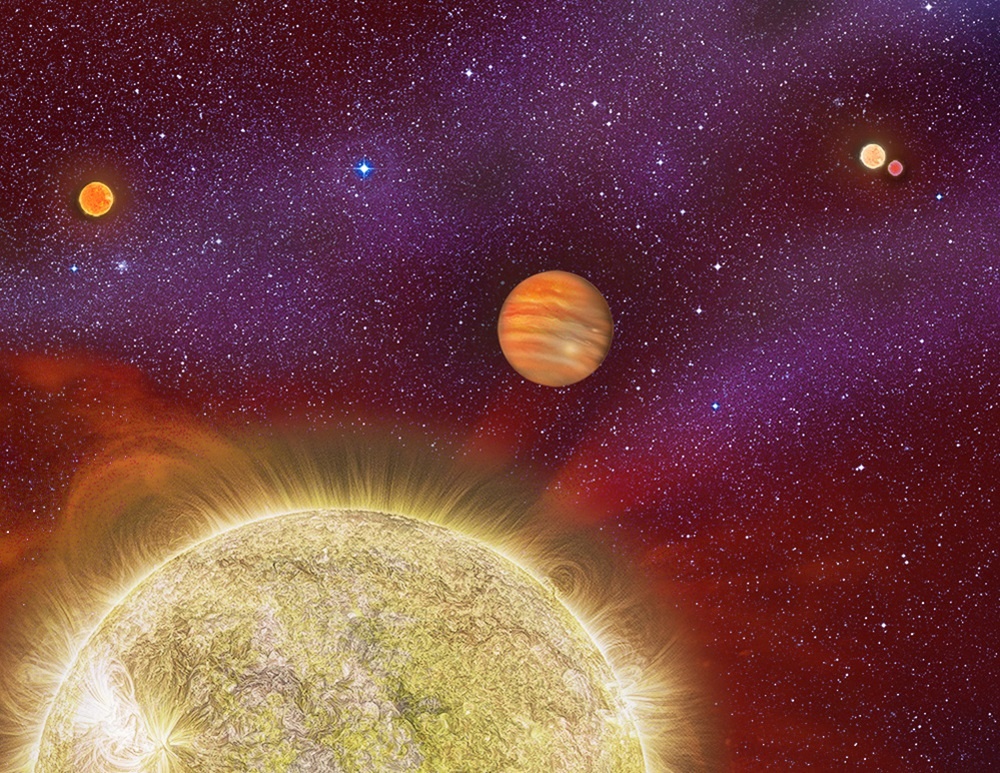
NASA’s Transiting Exoplanet Survey Satellite (TESS) has found over 5000 candidate exoplanet candidates, and 197 confirmed exoplanets since its mission began in late 2018. TESS is good at finding exoplanets, but the spacecraft is a powerful scientific platform, and it’s made other discoveries, too. Scientists working with TESS recently announced 97 quadruple star candidates, nearly doubling the number of known quadruple systems.
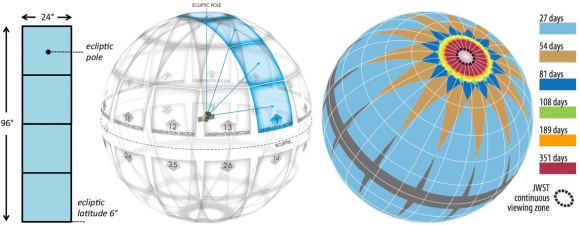
TESS is equipped with four CCD cameras with adjacent field-of-views to produce a 4 x 1 array, or ‘observing sector,’ yielding a combined field-of-view of 96x 24 degrees, as illustrated above. Image Credit: NASA
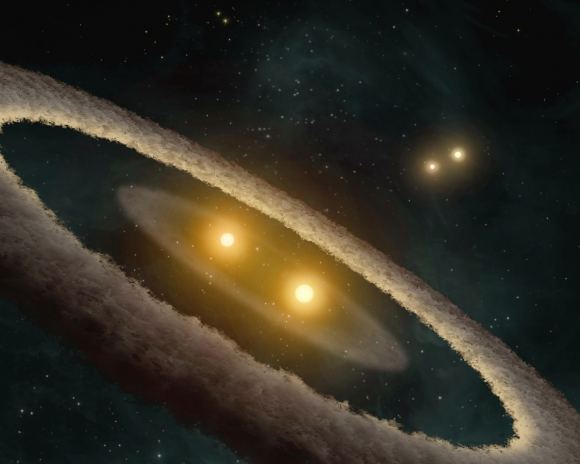
This is an artist’s illustration of HD 98800, a quadruple star system located in the TW Hydrae association. It’s not part of the new catalogue and was discovered previously. Image Credit: – By NASA/JPL-Caltech/T. Pyle (SSC) Spitzer Mission Pages Public Domain, from Wikipedia
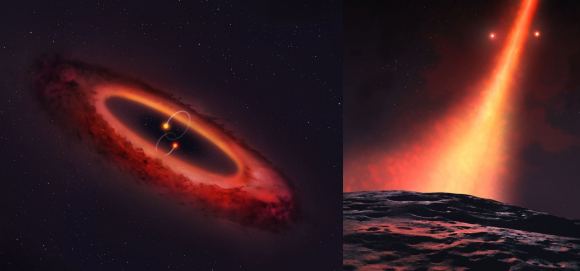
HD 98800 is a quadruple star system with a protoplanetary disk at right angles to the stars. Could planets form in such a system? Image Credits: UNIVERSITY OF WARWICK/MARK GARLICK
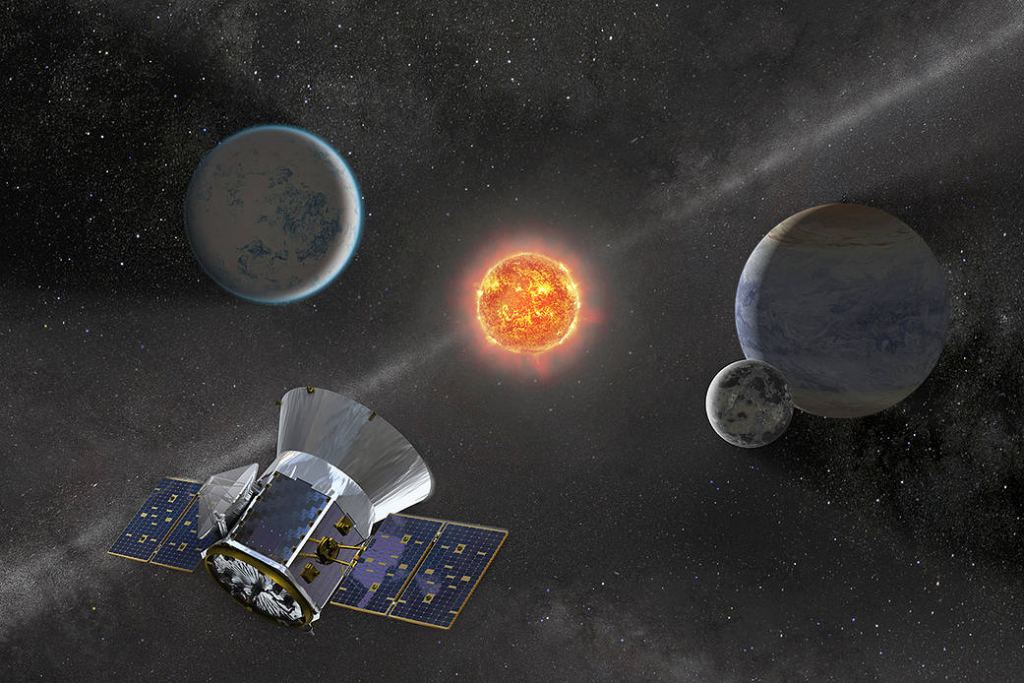
An artist’s rendition of the Transiting Exoplanet Survey Satellite (TESS). Credit: NASA's Goddard Space Flight Center
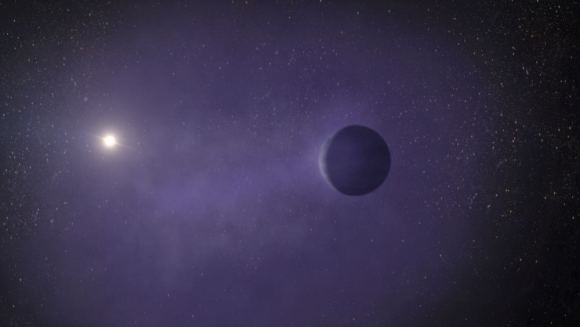
An artist’s illustration of the mini-Neptune TOI 560.01 losing its atmosphere and transitioning to a super-Earth. Credit: Adam Makarenko (Keck Observatory)
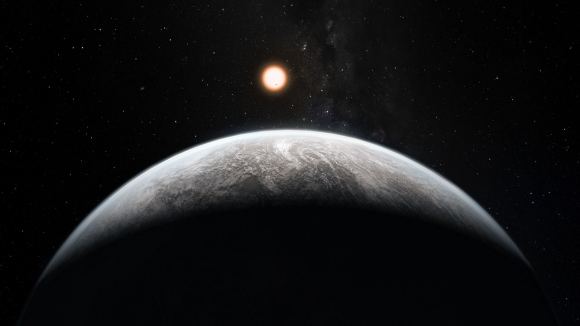
Artist’s impression of a Super-Earth orbiting the Sun-like star HD 85512 in the southern constellation of Vela (The Sail). Credit: ESO
You can buy Universe Sandbox 2 game here: Hello and welcome! My name is Anton and in this video, we will talk about a detection of the first Earth like planet by TESS telescope. : Find all of the data you can analyze yourself here And the detection paper is here: Support this channel on Patreon to help me make this a full time job: Space Engine is available for free here: Enjoy and please subscribe. Twitter: Facebook: Twitch: Bitcoins to spare? Donate them here to help this channel grow! 1GFiTKxWyEjAjZv4vsNtWTUmL53HgXBuvu The hardware used to record these videos: CPU: Video Card: Motherboard: RAM: PSU: Case: Microphone: Mixer: Recording and Editing:
NASA's Transiting Exoplanet Survey Satellite (TESS) has discovered a world between the sizes of Mars and Earth orbiting a bright, cool, nearby star. The planet, called L 98-59b, marks the smallest found by TESS yet. Two other worlds orbit the same star. While all three planets' sizes are known, further study with other telescopes will be needed to determine if they have atmospheres and, if so, which gases are present. The L 98-59 worlds nearly double the number of small exoplanets -- that is, planets beyond our solar system -- that have the best potential for this kind of follow-up. L 98-59b is around 80 Earth's size and about 10 smaller than the previous record holder discovered by TESS. Its host star, L 98-59, is an M dwarf about one-third the mass of the Sun and lies about 35 light-years away in the southern constellation Volans. While L 98-59b is a record for TESS, even smaller planets have been discovered in data collected by NASA's Kepler satellite, including Kepler-37b, which is only 20 larger than the Moon. The two other worlds in the system, L 98-59c and L 98-59d, are respectively around 1.4 and 1.6 times Earth's size. All three were discovered by TESS using transits, periodic dips in the star's brightness caused when each planet passes in front of it. Credit: NASA's Goddard Space Flight Center/Chris Smith (USRA): producer and lead animator - Jeanette Kazmierczak (UMCP): Science Writer Music: "Autumn Rush" from Killer Tracks Read more: This video is public domain and along with other supporting visualizations can be downloaded from the Scientific Visualization Studio at: If you liked this video, subscribe to: the NASA Goddard YouTube channel Follow NASA’s Goddard Space Flight Center · Instagram · Goddard Twitter · Goddard pix Twitter · Facebook: · Flickr
As one of the most advanced photometric survey instruments, NASA’s Transiting Exoplanet Survey Satellite (TESS) has observed tens of millions of stars since 2018. Many of these stars display variable light output caused by various natural sources, including transits by surrounding exoplanets. With thousands of planet systems now known thanks to TESS and other platforms, is it possible that any of them could harbor life, and even more interestingly, intelligent and technological life? Theories posit that if intelligent civilizations exist in our galaxy, they might put artificial energy harvesting structures into orbit around their host star. Astronomers believe it’s possible to detect this phenomenon by watching stellar brightness dim each time a structure passes in front of the star. One of the best places to find so-called alien megstructures is the uniquely large dataset provided by TESS. This NASA mission offers additional opportunities to search for advanced extraterrestrial life associated with already known exoplanets. As part of the Breakthrough Listen Initiative, SETI scientists observe each TESS transiting planet system using the Green Bank Telescope and the Allen Telescope Array in the hope of detecting a radio transmitter relatively nearby in the Galaxy. To explore the possibility of finding technosignatures within the TESS dataset, we invited two scientists to discuss their recent work. Ann Marie Cody, Principal Investigator with the SETI Institute's Carl Sagan Center, has received funding from NASA to survey the TESS data set to detect a megastructures, similar to Dyson spheres, in orbit around those star systems. Noah Franz, a researcher at Berkeley SETI and Siena College, led an article reporting on the search for technosignatures in radio using the Green Bank Telescope for several targets of the TESS catalog. Together with Franck Marchis, senior astronomer at the SETI Institute and Chief Scientific Officer at Unistellar, the team will discuss the advancement of these techniques in light of today’s known 5,000 confirmed exoplanets and 4,000 TESS candidate exoplanets. The researchers will examine the impact of their research in the framework of astrobiology and how any discoveries of an odd signal or a weird signature could bring meaningful scientific information, even if it is not (yet) E.T. If you like science, support the SETI Institute! We're a non-profit research institution whose focus is understanding the nature and origins of life in the universe. Donate here: to the seti institute Learn more about the SETI Institute and stay up-to-date on awesome science: - Subscribe to our YouTube channel at - Watch our streams over on Twitch at - Listen to our podcast, Big Picture Science - Subscribe to our newsletter - Buy merchandise from Chop Shop Don't forget to like and subscribe! Ring the bell for notifications of when we go live. #SETITalks #megastructure #exoplanet